





Powered By

























Powered By


















Whether it’s outdoor soft adventure you seek, food trails to follow, or learning something at your leisure - we invite you to make Johnston County’s towns and convenient interstate exits part of your trip. There’s something to experience for the whole family. Explore parks & greenways (many that are dog-friendly), or take a drive to one of our scenic farms and pick up fresh produce for your next meal! Experience the culture of JoCo and visit our vibrant downtowns with unique shopping, dining, and entertainment. No matter what you’re looking for, you’ll find something to do in Johnston County.
Our brew masters will gladly serve you up a flight sharing stories of unique blends and creative names behind their craft beers. Deep River Brewing Co. often has food trucks on site to make it a perfect relaxed night out. Many of our breweries also feature live music and host special events, so check our calendar of events often.
Fainting Goat Brewing Co., our most uniquely named brewery, prides itself on being a brewery without WiFi so you can spend the time there chatting with friends or making new ones! They also hold events, have live music, and offer games to play to pass the time.
Our newest brewery, JoCo Brewing Company, is located in the Cleveland Community with plenty of great restaurants and shops nearby. Get lunch out then stop by to try a beer that may turn out to be your new favorite!


Get out along our trails and experience life along the Neuse River. Nature and recreation are abundant with greenways for hiking and biking that are part of the state-wide Mountains to Sea Trail. You can also enjoy kayaking and canoeing access to the river, hunting, and many fishing access points as well.
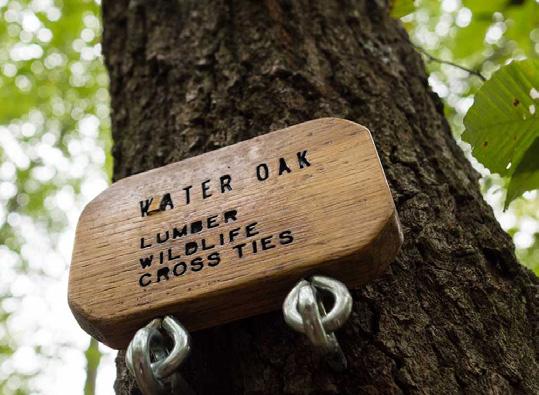
For family outings visit our two managed forests in the county for more activities like bird watching, horseback riding, picnics and fishing at Howell Woods and Clemmons. Additional parks in the Towns of Clayton, Smithfield, Selma, Kenly, Four Oaks and Benson offer playgrounds and trails.
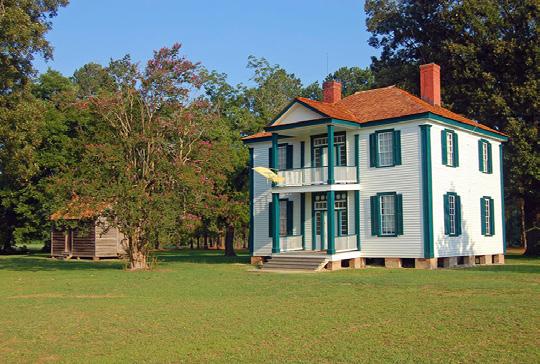
Our Civil War history is centered around Bentonville Battlefield State Historic Site near Four Oaks; the largest land battle fought in North Carolina and the last major Confederate offensive of the war. In addition to this site, visitors interested in Civil War heritage should consider taking a drive along the Carolina Campaign Driving Tour which has eleven interpretive markers featuring OnCell radio tours. Listen to historian Mark Bradley share personal stories of soldiers and citizens that endured the battle.

Johnston County has truly discovered the advantage of converting historic school buildings into auditorium space for the performing arts; both in Clayton and Benson, historic renovated school auditoriums offer theatre productions, live music, plays, and much more in very intimate surroundings. JoCo also has visual arts like the Clayton Sculpture Trail, for visitors to get outside and explore an interactive walking art museum; each stop is a unique sculpture and the art pieces are rotated out every year!

If you are planning an outing for the kids or with friends when visiting Johnston County, you will find a variety of games and activities to choose from. Movies, bowling, and bounce houses are all fun and safe activities. If you are looking for a more thrilling activity and getting locked in a themed escape room is your cup of tea, we have two to choose from.
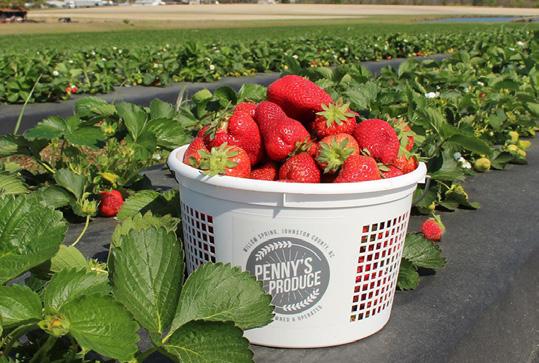
Agritourism and farming heritage is truly our strength, as it defines many of the visitor experiences available in the county. Johnston County leads the nation in production of cash crops, including tasty sweet potatoes. Area farmers have expanded their operations to sustain the family farm, offering agritourism activities, on-farm tours, promoting local products with pick-your-own operations, and even becoming wedding venues.

Hand Picked Nursery is a veteran-owned business that loves plants and want to bring their joy to you by offering you a wide selection of plants online and in-person. Specializing in a variety of plants and flowers for your home or business. They can customize your order as needed and can even make suggestions based on your individual needs!
In addition to our garden center, we currently have a botanical trail that also serves as a picking trail and exercise trail, along with our outdoor entertainment areas.
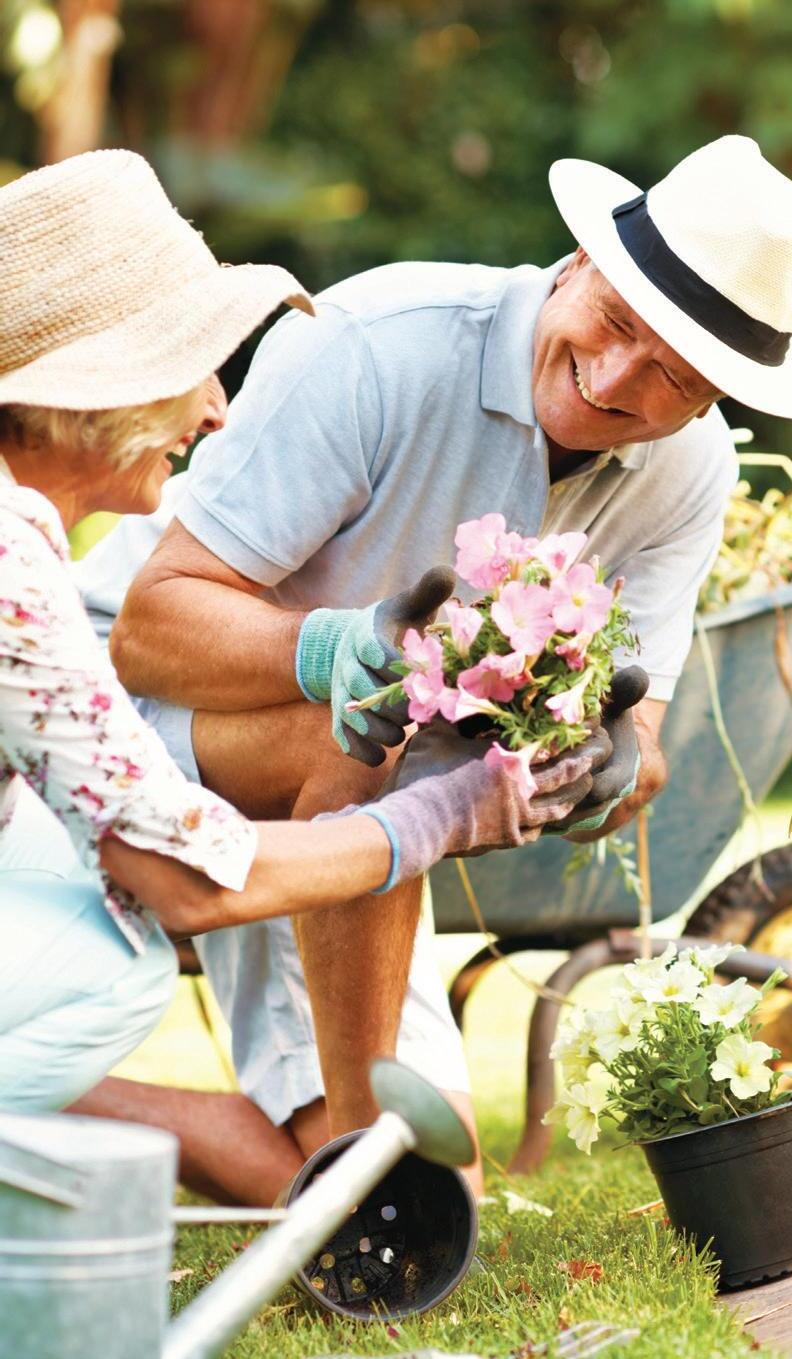


We all could use a break, a reprieve from the daily pressures, especially as we get older. I have found that gardening gives me that outlet. It may also fulfill that desire for a hobby.

Gardening can be therapeutic for many of us. That is, if you enjoy gardening!
The following speak to good gardening for seniors:
• Raised beds work well and you will find that there is less bending.
• Buy a portable kneeler aide that is padded and comes with study handles. Youmay find one that also converts to a seat. They are relatively inexpensive. And maybe you won’t get your knees dirty.
• Exercise! It keeps you moving, it’s low impact unless you do some seriou chopping. Gardening also helps with maintaining your balance, flexibility and may build up some muscles.
Depressed? Most of us have been depressed at some point in our lives, for othersit’s a chronic condition. One way you might relieve the symptoms is by doing a bit of gardening.
• Gives you a sense of accomplishment.
• Invest in some good tools that are lighter and have ergonomic handles. Ratchet loppers and pruners may come in handy.
• Join a garden club or volunteer at a public garden like the Raulston Arboretum, Duke Gardens, the Botanical Gardens in Chapel Hill and the Joslin Gardens in Raleigh.
Reading gardening books is a capital idea, but applying what you’ve learned is even better. Just don’t blame me for an occasional ache or pain!












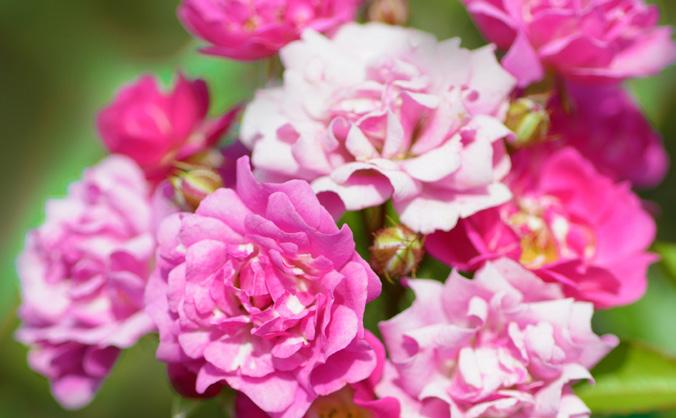
Editor Chip
Design & Production
Jordan Beard
Advertising Sales
Chris Hooks
Mike Sleyman
Chip Winstead
John Fick
Sophie Gray
Jon Sheldon
Jordan Beard
Contributing Writers
Mike Raley
Kristine Bellino
Erica Winston
Becca Wait
Cregg Henson
Kathy Clark
Chris Hooks
Jordan Beard






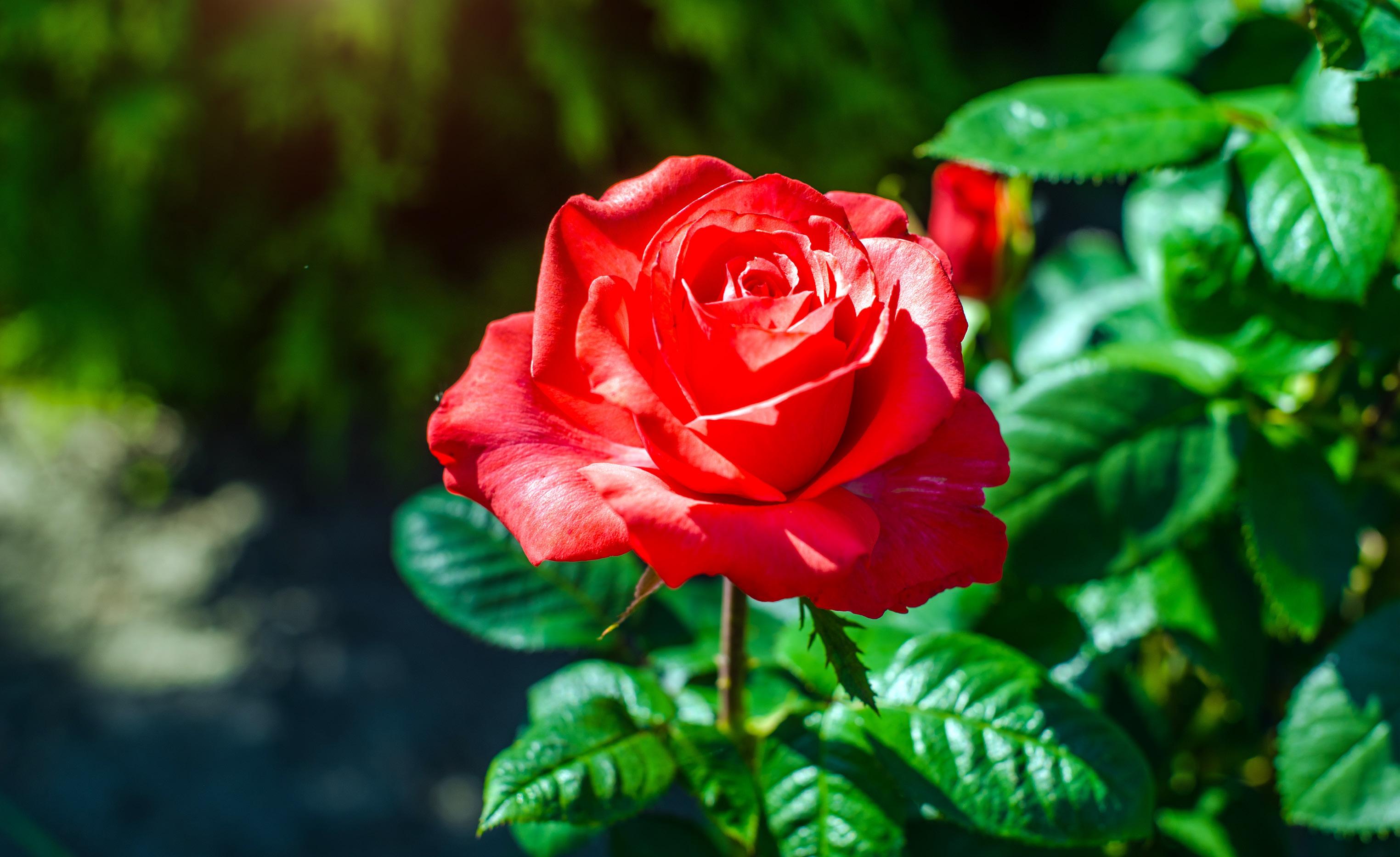
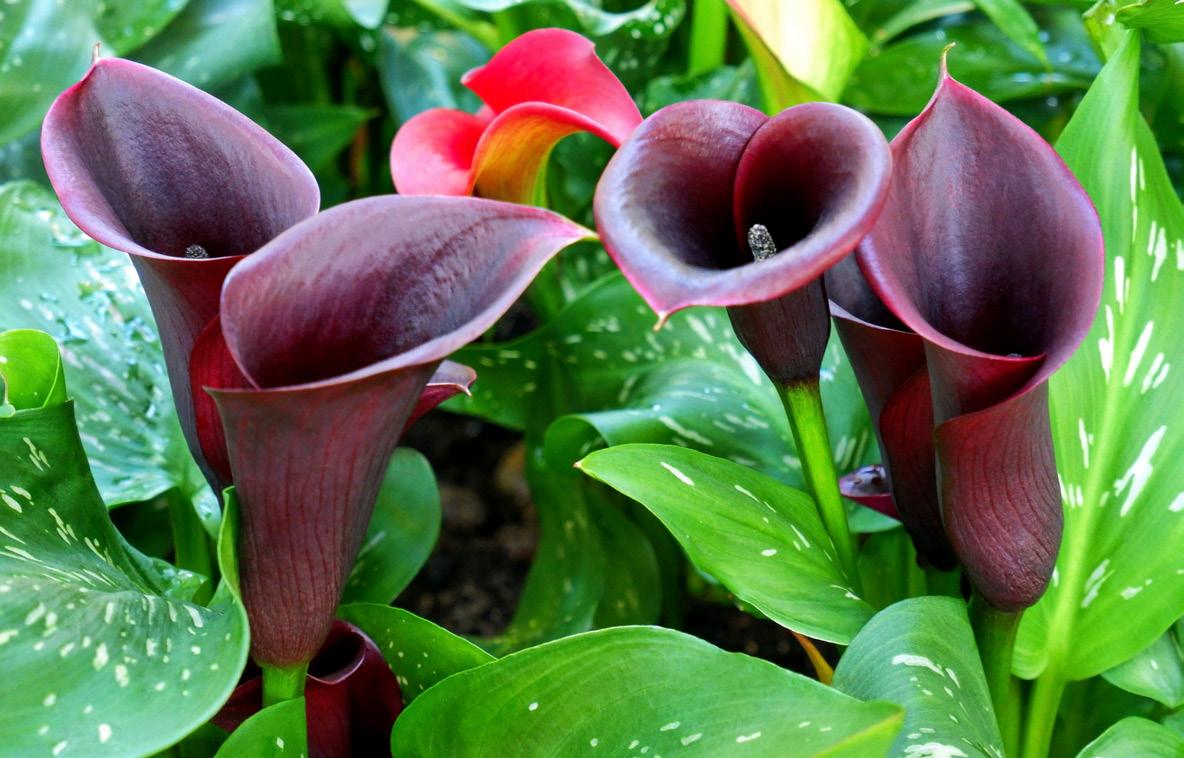
As a boy growing up in NashCounty, I vividly remember watching my mother plant flower bulbs in the landscape. I was not a lot of help of course. I couldn’t sit still long enough to assist, but the beauty of the finished product in our yard and all over town did leave me with an appreciation for the magic of “Mother Nature”.
There are flower bulbs for all seasons in North Carolina. We get a lot of calls on the “Weekend Gardener” about bulbs that produce daffodils, crocus and tulips, but not as many about summer-flowering bulbs.
In North Carolina, dahlias are a popular summerblooming bulb that usually flower from late summer to early fall. Dahlias prefer full sun in zones 6, and partial shade in zones 7 and 8. They also prefer rich, well-drained soil.
Other summer-blooming bulbs include: Gladiolus, Canna lilies, Calla lilies, Caladium, Begonias, Anemones, Pineapple lilies. In general, summer-blooming bulbs should be planted in mid-spring after the risk of frost has passed. This is usually after the second week of May.
Here are some tips for growing bulbs in warm climates:
• Select a planting site with partial or dappled sunlight
• Plant them at least as deep as specified
• Apply a light 2” layer of mulch to help retain moisture and to trap cool temperatures in the soil
• Give them a little drink after planting if rain is insufficient.
Summer and fall flowering bulbs provide another dimension to gardening. They add beauty and interest to the landscape and, since most of them are tender, they offer a unique challenge to the gardener. There are a large number of different types of bulbs, offering variations in forms, fragrances, colors, and lasting brilliance which many summer annuals cannot achieve.
When choosing “bulbs,” one must always be aware of a few basic terms. Not all grow from true bulbs; some grow from rhizomes (Canna), corms (Gladiolus), or tuberous roots (Dahlia). Botanically, there is a difference, but this is generally important only to the scientist. The everyday usage of the term “bulb” includes all plants that grow from fleshy underground storage organs. The most important difference which must be understood is the distinction between hardy and tender bulbs. In North Carolina, hardy bulbs (daffodils, hyacinths, tulips, lilies) over-winter in the ground, while most tender bulbs (Gladiolus, caladiums, tuberous begonias) are either dug after the first frost or the containers are brought indoors. They are dried or placed in storage materials in either a warm or cool place. In the spring, they are either replanted after the last frost or subsequently placed outside on patios, decks, etc.
When landscaping with summer and fall flowering bulbs, special attention must be given to the design. As with most annual flower beds, they are planted in late spring and usually renovated every year. During the winter months, a mulch is spread over the bare ground. Design the area to incorporate woody ornamentals which offer a landscape interest when the bulbs are not flowering. Favorite uses of these bulbs are in: borders, ground covers, rock gardens, and especially in containers and hanging baskets. Most summer flowering bulbs are not suggested for “perennializing” because they do not overwinter and they are considered somewhat “formal.” Rhizomous Iris, Lilies, and daylilies are notable exceptions. The following are examples of the eight of the most popu ar summer and fall flowering bulbs and their cultural and storage requirements:
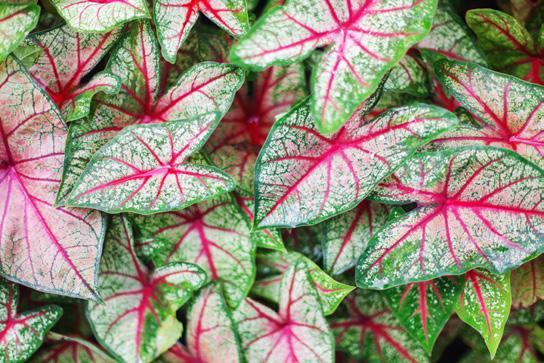
Caladiums are tropical plants with heartshaped leaves ranging in size from 6 to 12 nches. The numerous cultivars offer foliage colors in red, salmon, rose, white, or green with many variegated combinations. Caladiums prefer a rich soil and shade. Grown mostly for their interesting foliage display, caladiums perform well in garden borders and containers. Fertilize them once a month with 8-8-8 (2 lbs/100 ft2). Caladiums do not overwinter in North Carolina. Therefore, they must be dug in the fall and stored dry at 70 to 75°F. The tubers are replanted in the spring after the last chance of frost. One additional note: most cultivars are adapted to full shade, but many selections tolerate partial sun or early morning sunlight. Full sun generally reduces the intensity of the foliage color of most cultivars.
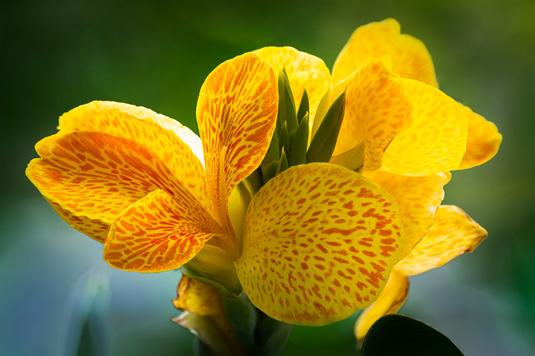
Cannas are popular among home gardeners and professional landscapers because of their extended flowering period and luxurious green or bronze foliage. There are over 60 cultivars available, providing a wide choice of colors. The rhizomes are generally planted the first of May in a rich well drained soil, and in an area which receives full sun for at least 6 hours per day. Plant with only about an inch of soil over the rhizomes and set them 18 to 24 inches apart. Apply 3 to 4 lbs. of 10-10-10 per 100 ft2 every 4 to 6 weeks throughout the growing season and water thoroughly. In cold areas of North Carolina (zone 6), the ground freezes and the rhizomes do not overwinter well. Once the foliage has been killed by frost, the rhizomes should be dug, shoots removed (along with any soil), and dried for a few days. They can be stored in bushel baskets or burlap bags covered with dry peat or vermiculite at a temperature of 41 to 50°F. In zones 7 and 8, they can be left in the ground, if mulched with 3 to 4 inches of organic material.
Dahlias are generally associated with late summer to early fall flowering periods in North Carolina (usually August to October). They can, however, be flowered earlier. Dahlias prefer full sun (zone 6) to partial shade (zones 7 and 8) and a rich, well drained soil. They require ample water during the summer, especially during periods of drought. Once started, be certain to keep them actively growing. Some dahlias require staking, as heights up to 7 feet are not uncommon. Flowers range from 3 to 12 inches in diameter and there are many shapes and colors available. A good pest control (insect and disease) program will enhance the success of dahlias. They are excellent as fresh cut flowers for the homeowner. Dahlia clumps are generally dug in the fall after the first frost and stored at 35 to 45°F in dry vermiculite or sand. In the spring, clumps can be divided with each section having at least one shoot. It should be noted that seed grown dahlias are not very heat tolerant. Also, they also tend to lack uniformity in growth habit and flower color display.
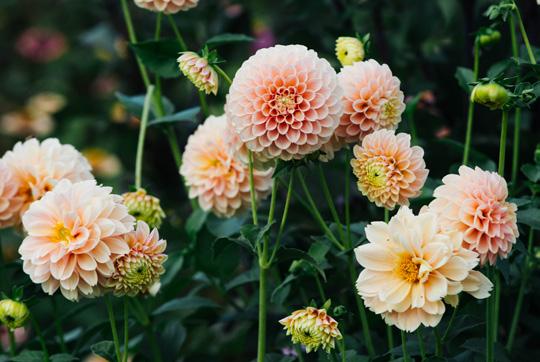
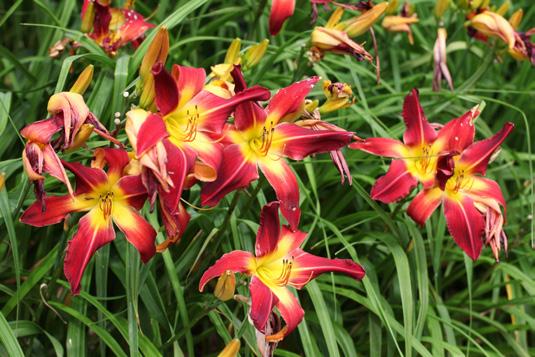
Daylilies (Hemerocallis -- Greek meaning ‘beautiful for a day’) are among the most popular and easiest bulbs to grow. One can have a flower display from early on summer to frost y using any garden soil, full sun to partial shade, an early summer application of 8-8-8 fertilizer, and a range of cultivars. Some daylilies can perennialize in extreme environments e.g., poor eroded slopes with no supplemental irrigation. However, the addition of organic matter is generally recommended for landscape use, both incorporated into the rootzone area and as a mulch. Currently there are over 12,000 registered cultivars representing almost the entire spectrum of the rainbow (Pure blue and pure white are the only two colors not available.). Daylilies are excellent for use in the perennial garden as taller background plants, in naturalized settings, or even the cutting garden. Hardy through zone 3, daylilies are adapted to all regions of North Carolina and do not require winter storage. Propagation is usually by division of clumps either in the fall or early spring using plantings that are 2 to 3 years old. Each clump should have 3 shoots with an adequate amount of fibrous roots. They range in height from 12 inches to 4 ft. The flowers are borne on a leafless stem called a scape.
Gadiolus are a gardener’s delight because they are easy to grow and offer a wide spectrum of colors. When planting times are staggered (weekly), they flower over the entire summer. Corms can be planted outdoors starting in early May. Planting depth to base of the corms is 4 to 6 inches. Use a well-drained soil and plant them 6 to 8 inches apart. Many gardeners like to plant in rows -- if so, the rows should be approximately 36 inches apart. A slow release fertilizer (5-10-10) should be applied at the rate of 3 to 4 lbs. per 100 ft2 of bed area when plants are 6 to 8 inches tall, and again when the flower spikes begin to appear in the foliage. Most Gladiolus do not overwinter. Therefore, the corms must be carefully dug and stored. After the foliage has dried, dig the corms, remove the soil, and cut off dead tops. Dry corms for 3 or 4 days in an open area and dust with an insecticide and fungicide. Store dry in mesh bags or trays at 35 to 41°F.
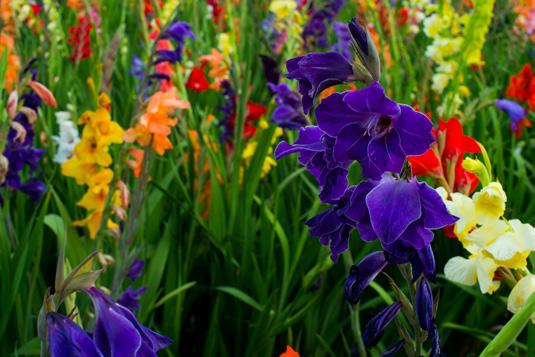
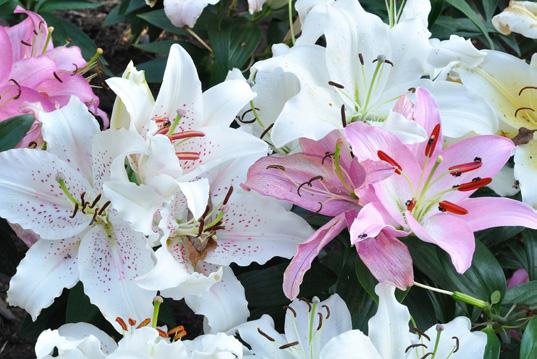
Lilies (Lilium spp.) are excellent bulbs for the summer garden. There are about 80 species and several hundred cultivars available. They range in height from 2 to 8 ft. They are available in white, yellow, red, pink, orange, maroon, and various bicolors. They require a well-drained area that receives plenty of sunlight and need to be kept moist. They can be planted either in the fall or spring. Either time is satisfactory; it only depends on the availability of the bulbs. Space them 6 to 10 inches apart. With the exception of Lilium candidum (Madonna lily), which should be planted with only 1 inch of soil covering the bulb, lilies should be planted with 4 to 5 inches of soil covering the bulb. This allows them to form stem roots. Tall lilies may need to be staked and should be protected from high winds. For most lilies, the pH should be about 6.5. Fertilize them lightly on a monthly basis with 5-10-10 starting when the shoots begin to emerge. Lilies perennialize readily and generally do not need to be disturbed. Aphids and thrips can be pests.
Rhizomatous iris (Iris spp.) are one of the easiest bulbous plants for the garden. There are many species including: Yellow Flag Iris, Siberian Iris, Blue Flag Iris, Japanese Iris, Crested Iris and Black Iris. There are 6- to 8-inch dwarf types and 3- to 4-ft tall types. They come in all colors (solid and bicolors) except red. Most species require a welldrained soil and only an occasional fertilization. They can be planted in the fall or spring depending on the availability of the rhizomes. Plant them with 1 to 2 inches of soil covering the rhizomes. They grow best in full sun, but do quite well in light shade.Rhizomatous Iris tend to grow and perennialize rapidly and need to be separated every 4 to 5 years.
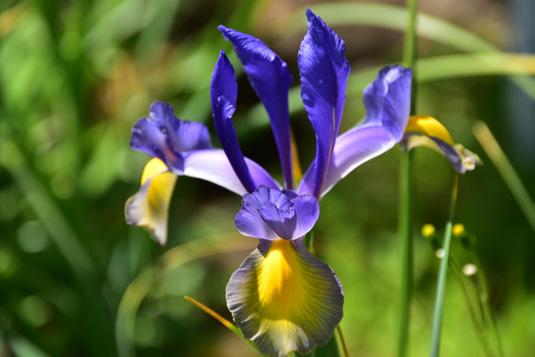
Tuberous begonias are one of the most spectacular of the summer flowering bulbs. Colors range from soft pastels to brilliant and electric solid colors. They can be used as bedding plants, in hanging baskets, or simply as flowers around trees in home lawns. Tuberous begonias are somewhat temperamental because they do not tolerate stresses. They dislike strong winds and require good air drainage. They need to be well watered, but do not like moisture on the foliage. They don’t flower well in either full sun or dense shade if not properly watered.
Incorporate a rich, organic loam into well-drained topsoil. Plant the enlarged hypocotyls (also called tubers) after the last chance of frost. The top of the hypocotyl should be at soil level. Place container in partial shade. Water when soil shows signs of drying, preferably in the morning hours. Storage procedure requires digging after frost has killed foliage, drying for a few days in open area, then storing in dry peat moss at 35 to 41°F. They can also be stored in containers or hanging baskets.
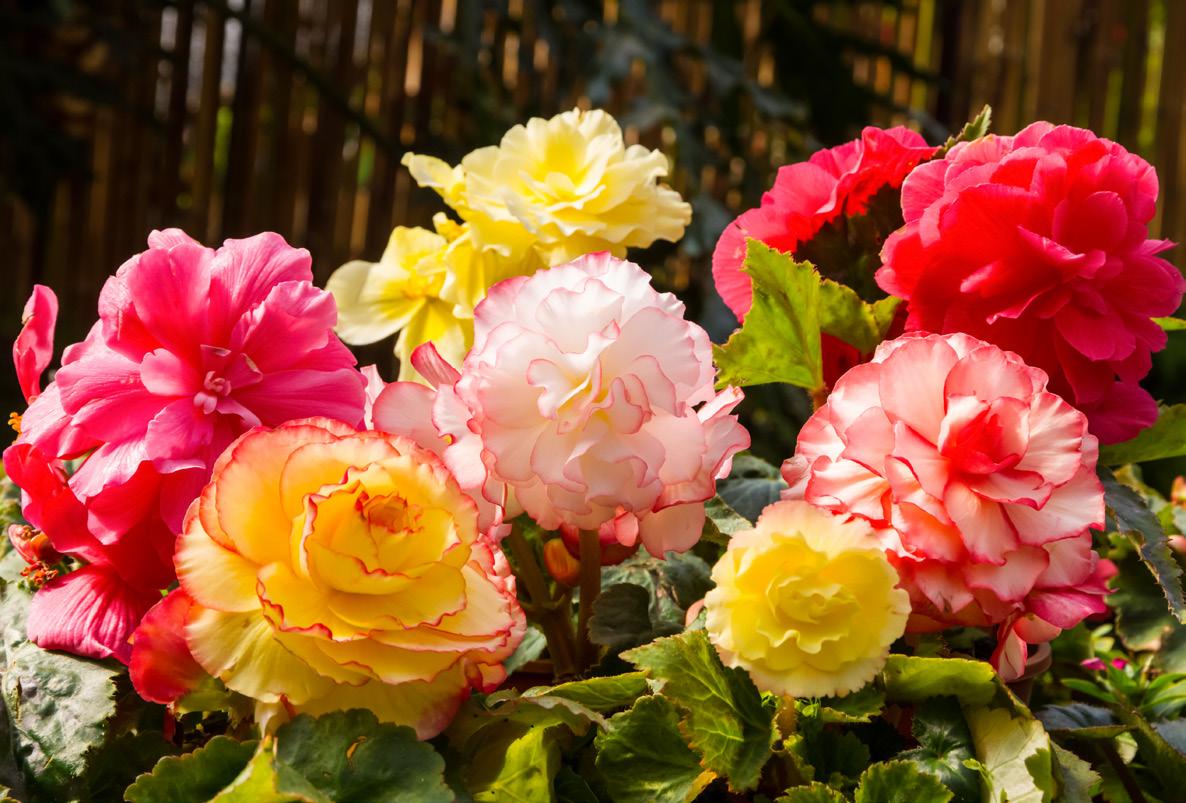
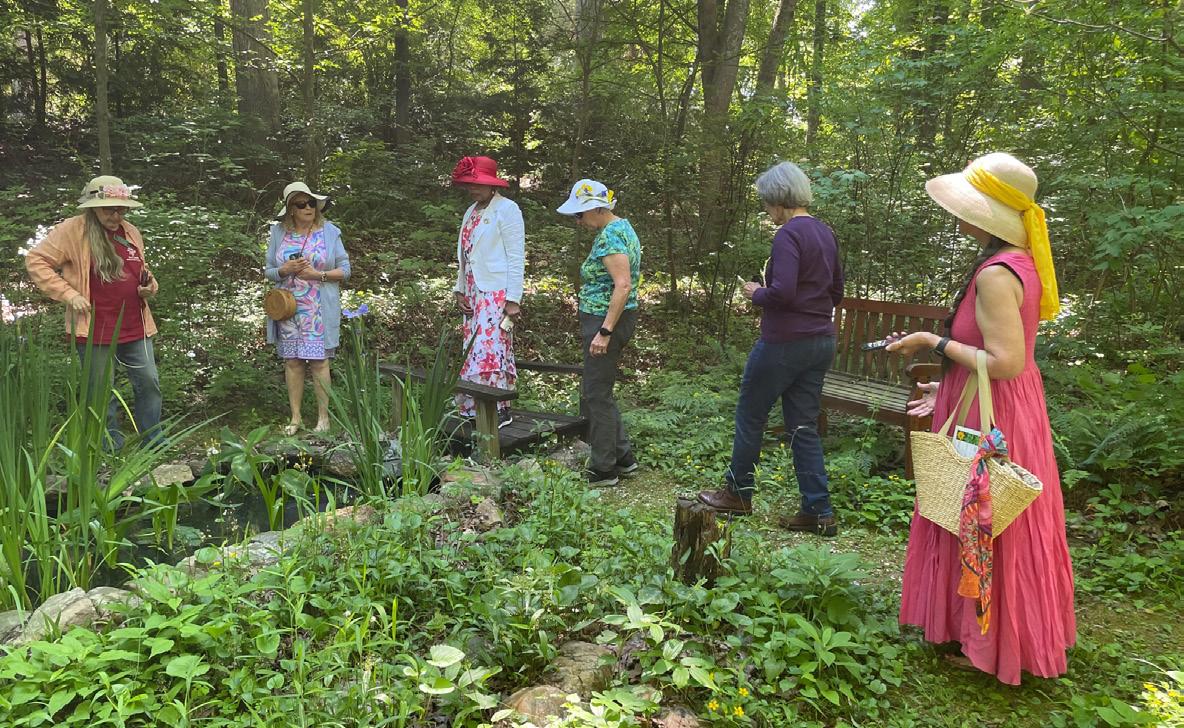
The Raleigh Garden Club (RGC) is getting ready to celebrate in a big way…2025 will be our 100 th birthday! RGC was founded in 1925 with the mission to make Raleigh into a garden. The Club has left many a footprint in Raleigh, from planting thousands of trees to developing public parks and gardens, including the eloved Raleigh Rose Garden and the Chapel Garden at Dix Park.
A long-forgotten story of Raleigh’s first arboretum, instigated by RGC, is a delightful story. Susan Iden, founder of RGC, was an expressive evangelist for native plants. The first female journalist for The Raleigh Times newspaper, she wrote, “I know of nothing that pays quite so much in pleasure and satisfaction in the garden as a wildflower bed.” She was inspired by Dr. B.W. Wells, professor of botany at NCSU. He was a feisty pioneer ecologist who influenced RGC members to garden with native plants decades before it became the garden trend it is today.
Susan urged the Club back in 1927 to create a wildflower and native plants botanical garden. They took over a 2-acre piece of unkempt land along Clark Street and called it Flora Park. In the first year alone they planted 70 trees and 115 shrubs, plus transplanted uncounted hundreds of wildflowers and native plants including hepatica, bloodroot, iris and violets. They kept planting every year. In 1932, for example, they added 47 native azaleas and 10 of our native rhododendrons, plus 41 more flowering trees.
Edna Metz Wells was the wife of Professor Wells. She was a beloved science teacher at Broughton HS and a member of the garden club. In 1937, she got the Science Club of Broughton to create a nature trail in Flora Park. The Raleigh Times wrote of the park in several articles, including April 18, 1930, under the headline Garden Club Develops Arboretum of Native Plants.
“High school students pass through the park daily on their way to school and it is expected that the arboretum will serve as a valuable field for botany study groups. The park, cut through by a winding stream, with sloping banks, and low lying corners, offers … trails winding through the woods, rock stepping stones laid in easy descent down the steep banks, little rustic bridges arching the streams and seats erected through the park to tempt one to rest and enjoy the beauty of the park.”
When Edna died suddenly the following year after surgery, the RGC Board recommended the park be renamed the Edna Metz Wells Park in her honor. The City Board of Commissioners approved it February 1, 1938. However, in the official request RGC is not mentioned. It is Edna’s students who requested that the city dedicate the park in her name. If you go to the park, the information sign describing the park dedication makes no mention of RGC or our work in developing the park. So here is a little mystery of forgotten history to ponder.
RGC has been busy planning a year-long celebration to commemorate our 100th. What other organizations have been around since Calvin Coolidge was President? A walking tour of our footprints is downloadable from our web page: https://www.raleigh-garden-club.org/about/rgc100. Because history is about preserving the stories and remembering the people who walked our streets and tackled the empty dirt of their day.
The Raleigh Garden Club meets on the first Wednesday of each month, September through June, at the NCSU Club. The Raleigh Garden Club welcomes all gardeners, whether you are a seasoned gardener or just have a few pots on your patio and want to learn more. www.raleigh-garden-club.org.
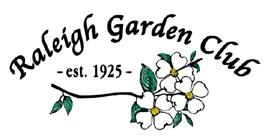
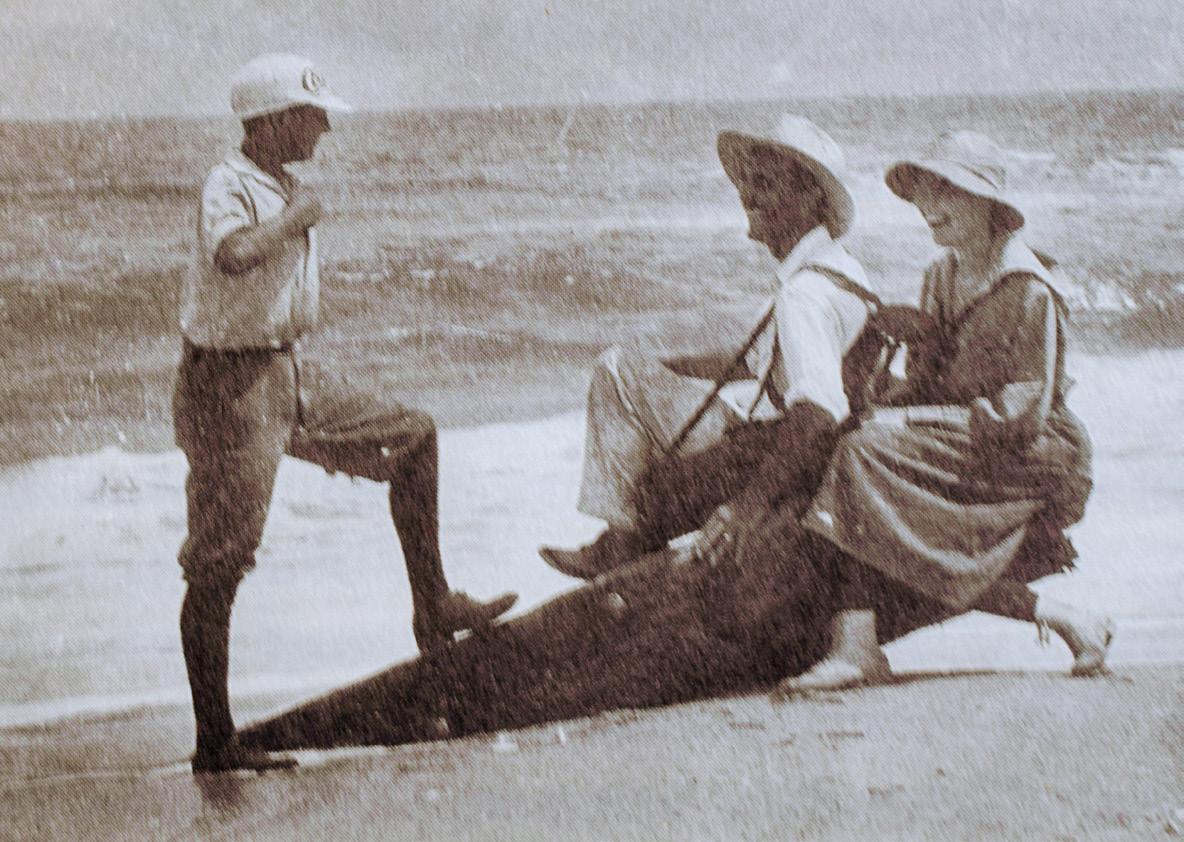
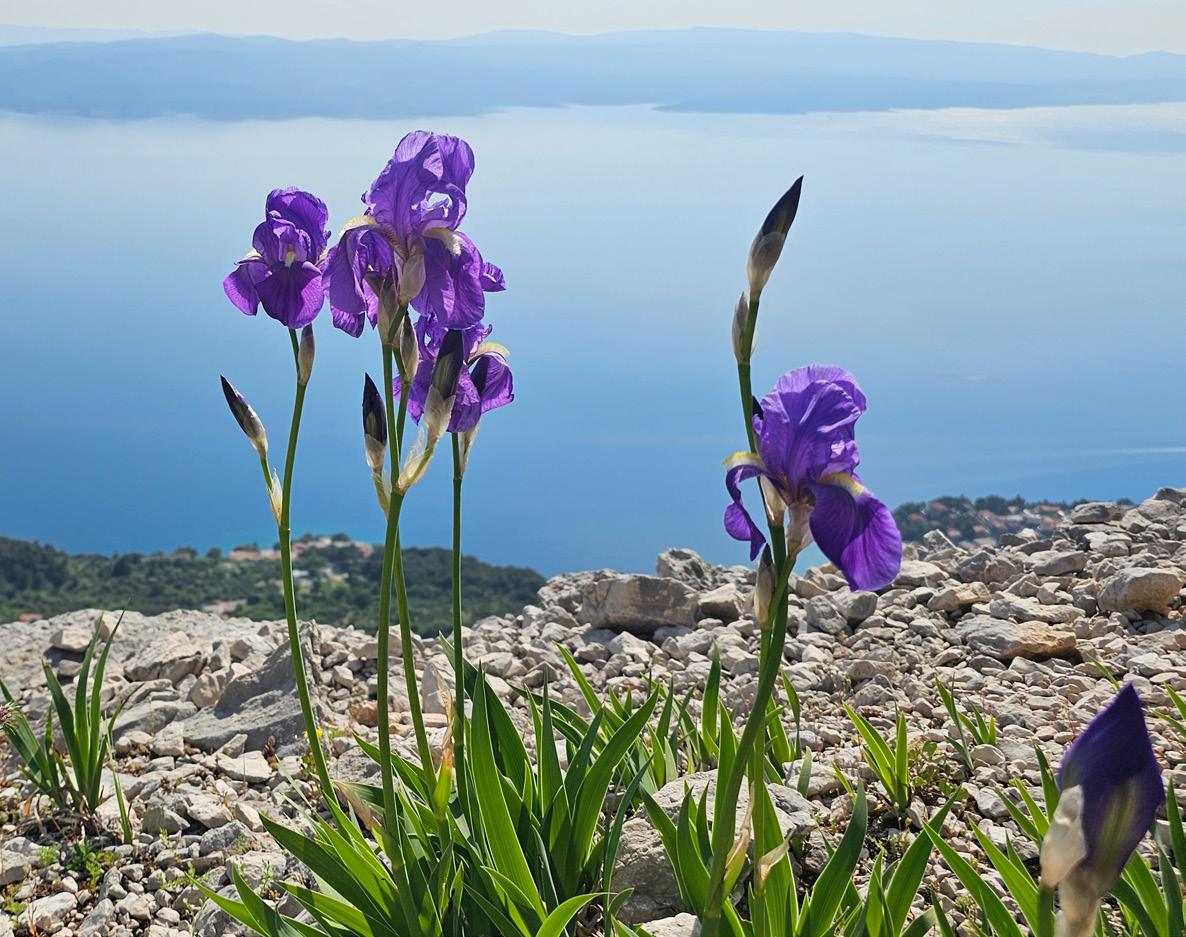
My wife and I just returned from a trip to Europe that took us from Athens to Venice. Out of all of the cities we visited along the route, I was most taken by the beauty of Dubrovnik, Croatia. It’s an arid region, much like Mediterranean coastal cities. I saw some iris blooming there and learned that it is the official flower of Croatia. Good choice.
Iris normally bloom in North Carolina from April through June. It’s easy to grow and gives back year -after-year with little care.
Bearded Iris prefer to grow in full to partial sun in this area and are normally planted in late Summer. Many iris varieties may be transplanted in fall.
Plant iris high in the dirt or you’ll have a no show. Most varieties will adapt to the acid soil in North Carolina.
Dig a couple of small trenches and place the rhizome or bulb on the ridge in between and fill in with soil. The rhizome should be just below the soil. Divide every three to five years or you start to lose blooms. So many fun colors to choose from. An iris is so southern. Enjoy!

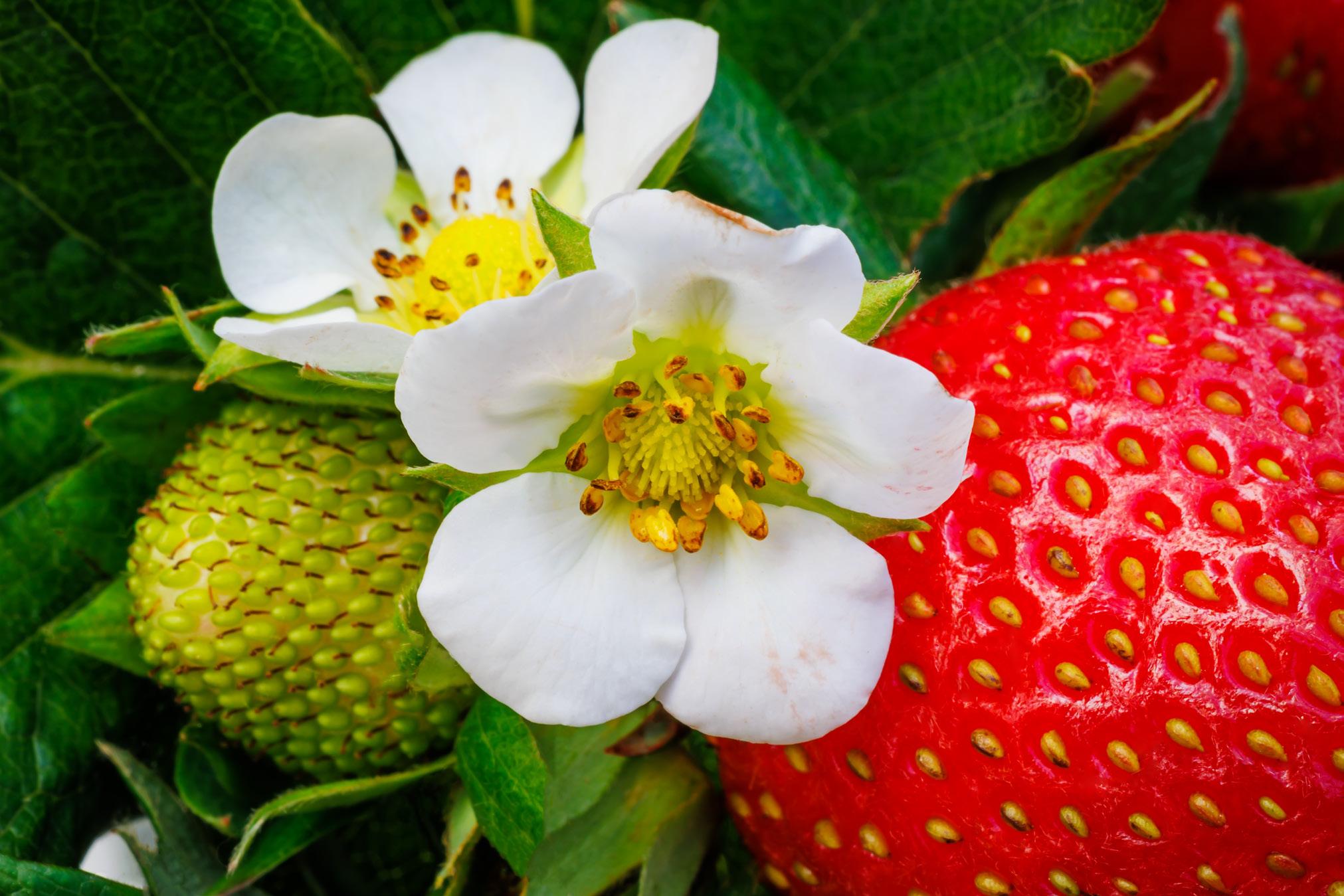


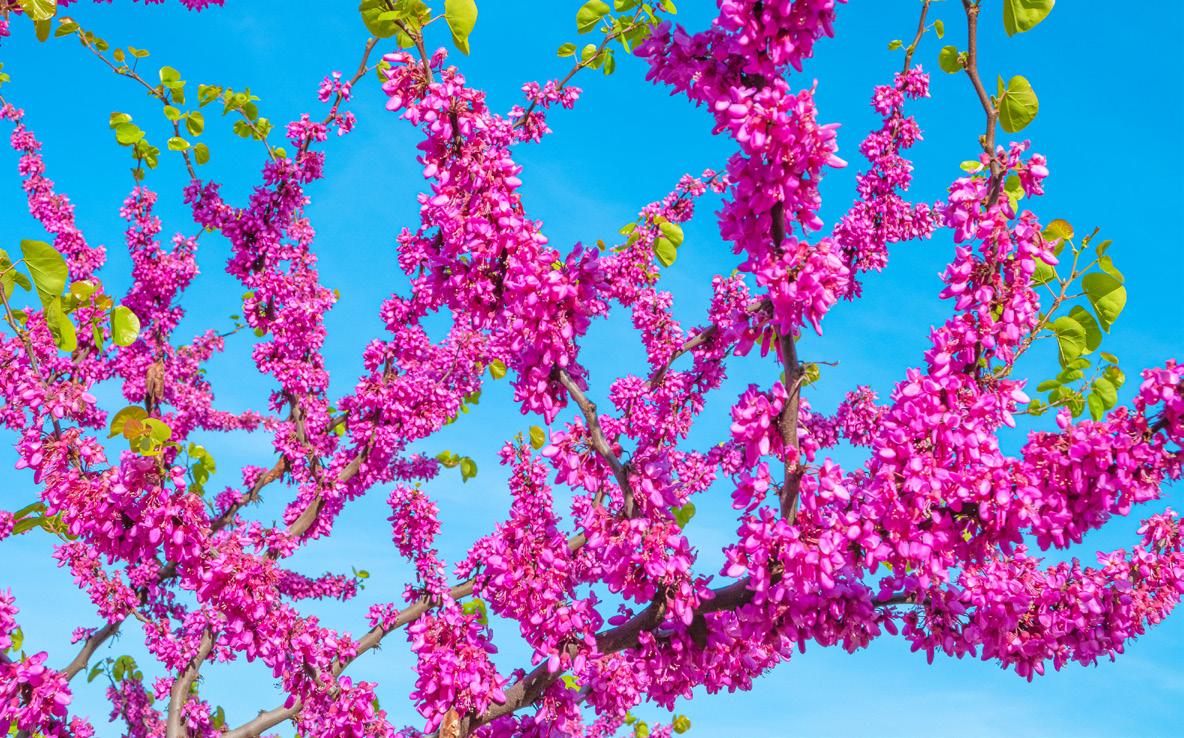
Eastern Redbuds are stunning and native to North Carolina. My mother, like many people in my hometown, enjoyed a car ride through Nash and Franklin counties to take in the sights of the countryside. She particularly liked cruising in the spring to see the Eastern Redbuds dotting the edge of the woods along the way. We always made our way through a community in Franklin County called “Redbud,” where there is a beautiful old church. When I was a child, I rememberthe redbud trees all around. In the 1950’s and 60’s it seemed as though redbuds grew everywhere in the wild. There were certainly more wild specimens then than now.
Redbuds are among the first trees to bloom in late winter and some varieties grow 20 to 30 feet tall. Their light purple to rose pink to white flowers standout in the forest edge and landscapes.
They are drought tolerant and adapt to sun and part shade, clay and sandy soil. Bees like the flower nectar and birds enjoy the seed pods. There are a few insect pests like borers, leafhoppers and scale, but it’s a pretty reliable tree.
You will find many varieties available, some developed by Dr. Denny Werner at NC State. Among his varieties are “Merlot”, “Whitewater”, “Golden Falls”, “Flame Thrower” and “Ruby Falls”. There is a pretty “Flame Thrower” planted outside the northeast wall of the Governor’s Mansion. I planted a “Ruby Falls” at my church several years ago, a weeping variety.
Find a great nursery in your area this spring and pick up a Redbud or two or three. Plant them properly with compost and give the roots adequate water for the summer especially. A fun nativeplant and native is best.


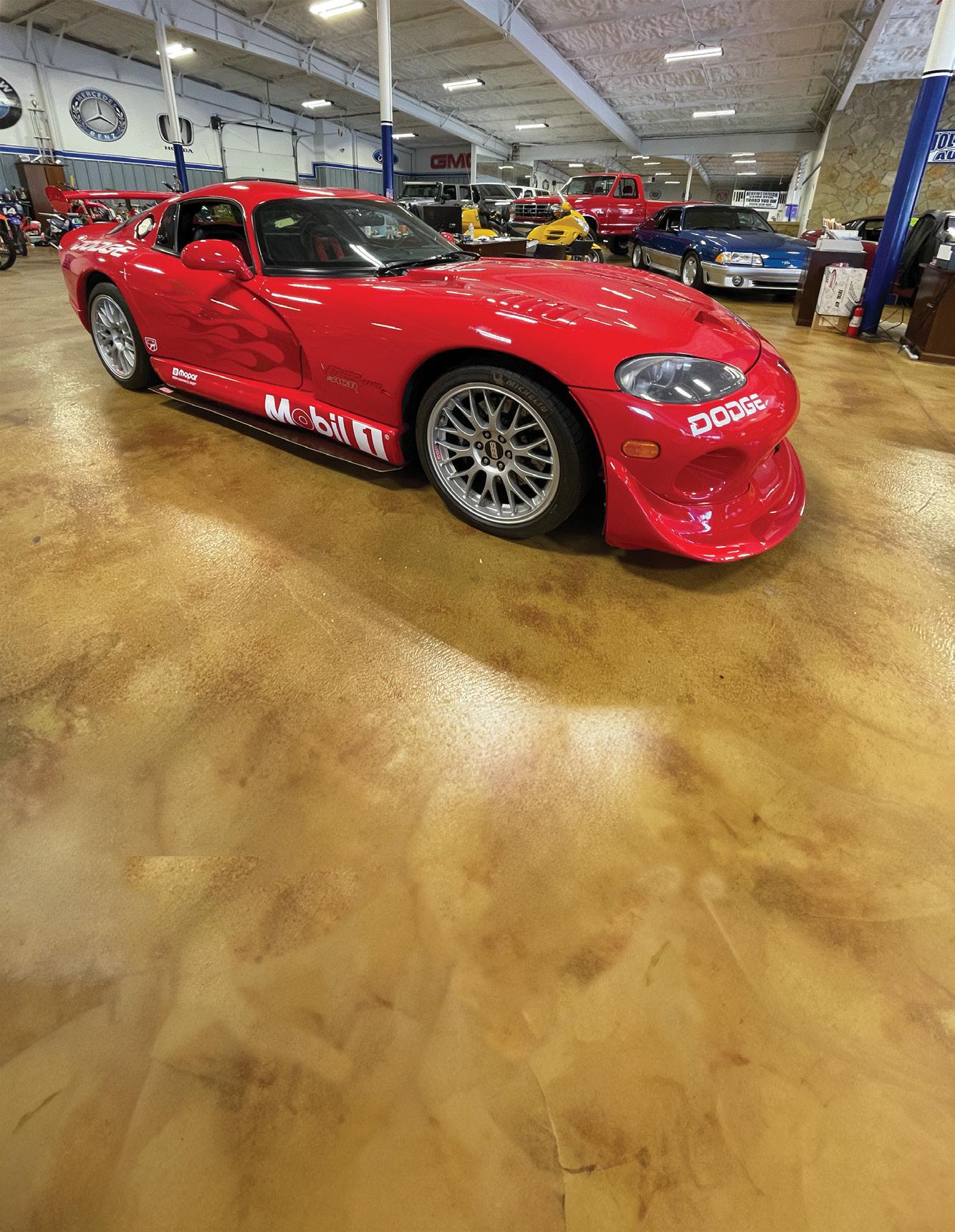

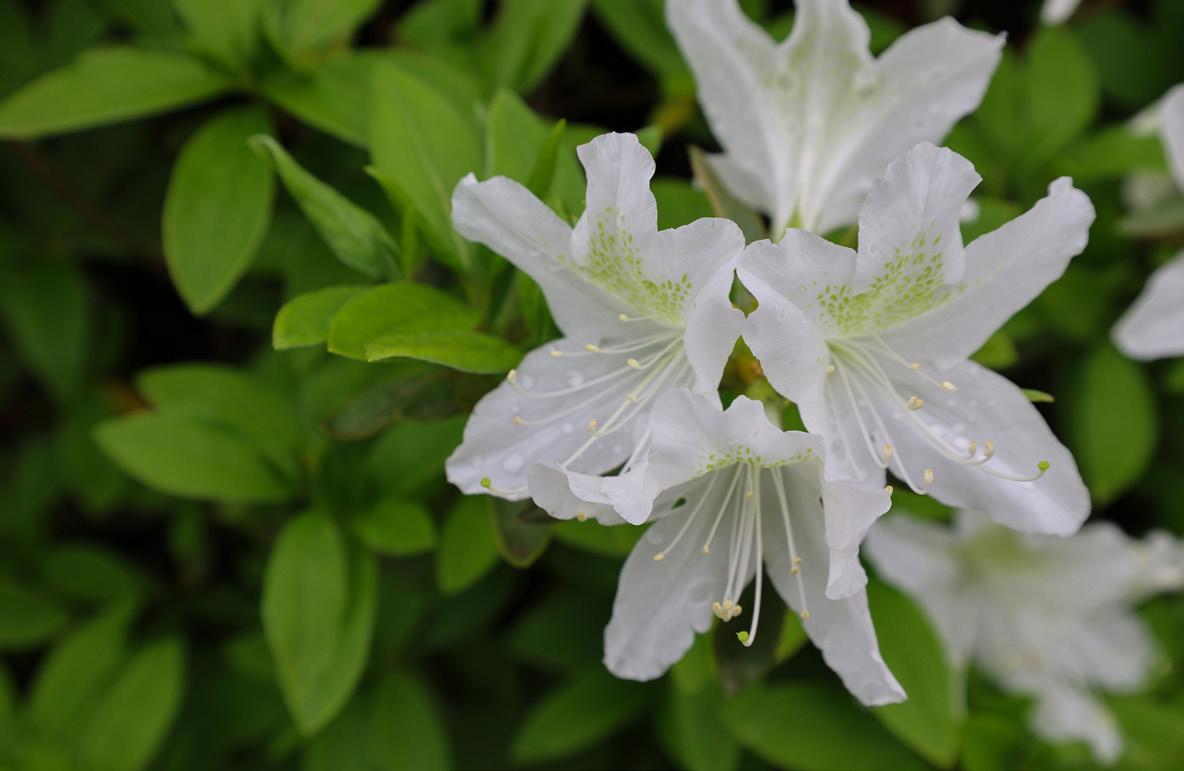
I grew up admiring the prolific azaleas in my hometown,and those just down the road in the upscale Westhaven section of Rocky Mount. I fell in love with this plant of the Azalea Festival in Wilmington and the fairways at the Augusta golf course.
Azaleas are actually a type of Rhododendron and most evergreen types are native to Japan. There are some deciduous varieties that are native to North America around the Triangle and much of the south. They love acid soil, relatively moist, fertile soil thrive and in partial shade. Plant them in mass. That will make your neighbors take notice! Dig the hole twice as big as the root ball using good organic matter and maybe a little Biotone from Espoma in the hole. Top dress with a light application of a good organic fertilizer. The extension folks recommend a 16-4-8 analysis. Water your new azaleas when you plant and regularly the first year.
There are many cultivars from which to choose of all colors and sizes. There are varieties that have been around for well over a century and improved cultivars and encore azaleas that bloom multiple times of the year. They are my favorites.
Azaleas have started blooming in central North Carolina. It is time to start looking for new varieties for your landscape. If you have established plants, prune them after they bloom. That’s true of any spring-flowering shrub.
Buy from a good local nursery. They have s tock that is often grown in this area and have personnel who can advise you. An added bonus is you are keeping the money local.
Take good care of your plants. They are a sound “investment”.



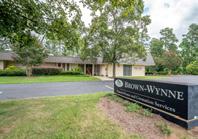



To learn more about pre-planning or to have a seminar for your Church or Civic Organization please contact one of our convenient locations.

Mike Raley
I am fortunate to be only the second host of a 80 year old legendary radio gardening show on WPTF Radio in Raleigh. I learned a lot working with John H. Harris who was the host of the Tar Heel Gardener for 40 years. We changed the name in 1985 to the Weekend Gardener when John retired. Today the Weekend Gardener is a 3 hour show heard every Saturday morning from 8:00-11:00. Questions from our callers range from bugs to begonias and lawns to lettuce. Many of the answers to their questions encourage gardening with Black Kow. Black Kow is one of our longtime sponsors and I would find it difficult to garden without this “perfect compost!”
In the fall, gardeners need Black Kow to provide fescue lawns with some tender loving care after our hot summers. It’s the time to aerate and fertilize and top dress cool season turf with Black Kow which is low in nitrogen and will help the roots thrive without burning the foliage. Newly sown grass seed will be happier too. Black Kow is a great supplement to fertilizers with higher nitrogen levels. Distribute a good blend of quality grass seed at 3 pounds per thousand square feet for overseeding and 6 pounds for a new lawn. If you decide to distribute a pre-emergent herbicide, you shouldn’t plant grass seed. Just like the weed seed you’re trying to prevent from germinating, your grass seed won’t sprout either.
Getting a soil test through your county cooperative extension service is a good idea in the fall or any time of year. Dig down several inches and mix the soil. Take it to the extension service. The results will tell you what kind of nutrients your landscape is missing. Using good quality compost material like Black Kow along with some lime may help solve your soil deficiencies.
As the weather cools, it is a great time to plant shrubs and trees, spring flowering bulbs, perennials, pansies and other fall annuals. The root systems will benefit from the cooler temperatures and having Black Kow incorporated into the soil to aid proper growth.
Shrubs don’t necessarily like to be pruned in the fall. Pruning promotes growth and may cut off next year’s blooms in plants like azaleas and camellias. Wait until Spring-flowering shrubs bloom before you prune them Tender new foliage can be susceptible to cold damage when temperatures drop. So wait till spring or summer to prune most shrubs. Your county extension service master gardeners can help you with pruning guidelines. Trees can be pruned when they are dormant in the winter.
If you want to try your hand at vegetable gardening, check with your county extension service information about the vegetables you love. Find out the best growing conditions for vegetables in your area. I’ve always found that the nutrients in Black Kow work well whengrowing your food supply too.
Finally for the fall, clean up your landscape and winterize your mower and other tools.
No matter what kind of gardening you’re interested in, work the soil, get your get your hands dirty, enjoy your landscape and use Black Kow. Your plants will appreciate it!


When it comes to Mental Health and its importance, there’s one lady that has made it her mission. It’s the One-Eighty Lady. Sarah Coates, owner of One-Eighty Counseling. With her passion, determination, and drive, all with heels on, she is doing her part to change the stigma surrounding mental health from the Triangle to the Coast of this great state.
For readers of this magazine, you’re getting an inside glimpse into what makes her so unique and special.
Even though she was born in Darlington, South Carolina, Sarah grew up in Fayetteville. The always smiling mother of two was raised in a Christian family, something she says has had an impact on who she is as a person and how she raises her children to this day.
After getting her undergrad degree from Methodist University, it was at Campbell University where unbeknownst to her that the fire to get into her current field was lit.
“At the time, I honestly went back to school to be an English teacher,” said Sarah. “It was an Introduction to Counseling class that piqued my interest. Then I took an Abnormal Psychology class, and I was hooked. I learned how the mind worked and got more in-depth knowledge about Behavioral and Mental Health.”
It took less than a year for Sarah to realize that she had more to offer, so she delved into the process of becoming a licensed professional counselor. It was then that the wheels started churning that idea started to snowball, but she admittedly says, this was new territory for her.
“When I look back at 20-year-old me, Mental Health wasn’t talked about,” said Coates. “You always heard about one or two kids that had to go to a “therapist” and looking back and remembering, oh that kid had ADD and they didn’t have any treatment for it.”
In 2007, Sarah opened her own solo private practice working with mostly kids and teens in Johnston County when she and her husband Bradley started their family. It was at that time that Sarah fully believes the man upstairs put his hand on her.
“Talking about faith informing the way I live and work,” said Sarah. “I think God sent me someone, who also happened to be a mom and a psychologist who needed to rent some space and asked if she could join up with me, and I was like Sure! Can you take on these clients while I go on Maternity leave? So, then we partnered up for a while, and then another person came along and another and not too long after that, I formed a group and that’s how One-Eighty Counseling came along.
One-Eighty Counseling was in its infancy and one moment became just the jolt that made One-Eighty skyrocket.

“My husband lost his job in 2011 and I said to him, why don’t you stay at home with the two toddlers (Emma Grace and Charlotte are now 16 and 13 years old respectively) and I’ll go work full-time with this company I’ve started. Well, that lasted about 30 seconds,” said Sarah with a laugh. “He quickly found another job, but that was just the push I needed to work, grind, and hustle to grow this company and it just took off.”
At her core, the values that she carries, the motivation to always wanting to see people happy, feel better about themselves. That’s the first thing you learn about her. It’s that kind of motivation that made One-Eighty Counseling what it is today, but it certainly had its ups and downs.
“I think God sent me more therapists, and the practice just kept expanding. In 2014, we had 12 therapists in two locations, and after implementing some changes for growth, I lost half of them and I thought the business was doomed, but by the next year, we had 28 therapists in three locations, and we’ve been growing ever since.”
As of today, One-Eighty Counseling has six locations from the Triangle to the beach, and about 100 therapists. A true blessing for the mental health community. With all that said, this OneEighty lady doesn’t rest on her laurels.
“What keeps me going is there’s always more people seeking mental health therapy,” said Sarah. “With 100 therapists, we’re still full! My passion for helping people keeps me going and will keep me opening new locations and hiring more therapists to make a bigger impact. I’m just that inner cheerleader at heart, I just want to see people doing better, living healthier lives.”
Having that no such thing as failure attitude is exactly why One-Eighty Counseling is thriving but bestowing that type of mentality on her daughters means so much more to her.
“It’s very important for me for my daughters to see that women can achieve great things, and the sky is the limit, and no one can stop you, even if you’re wearing heels, just use them to smash ceilings,” said Sarah.
It was with that quote, the conversation came to a stop, but it was also met with her patented big smile that she uses every day to tackle what’s next on her docket. Something we should all try to do a little more of.







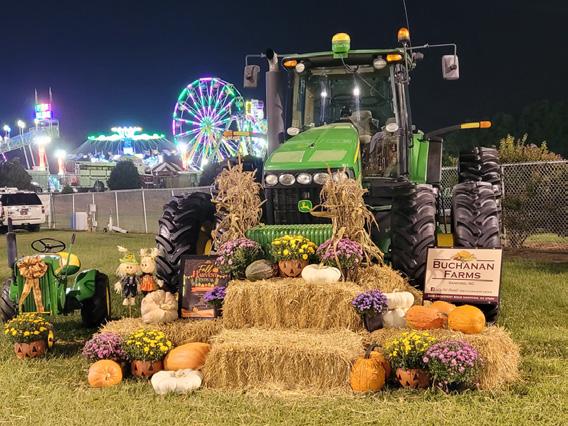
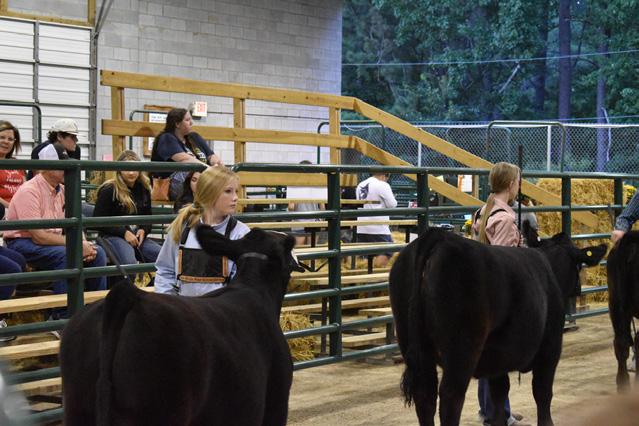










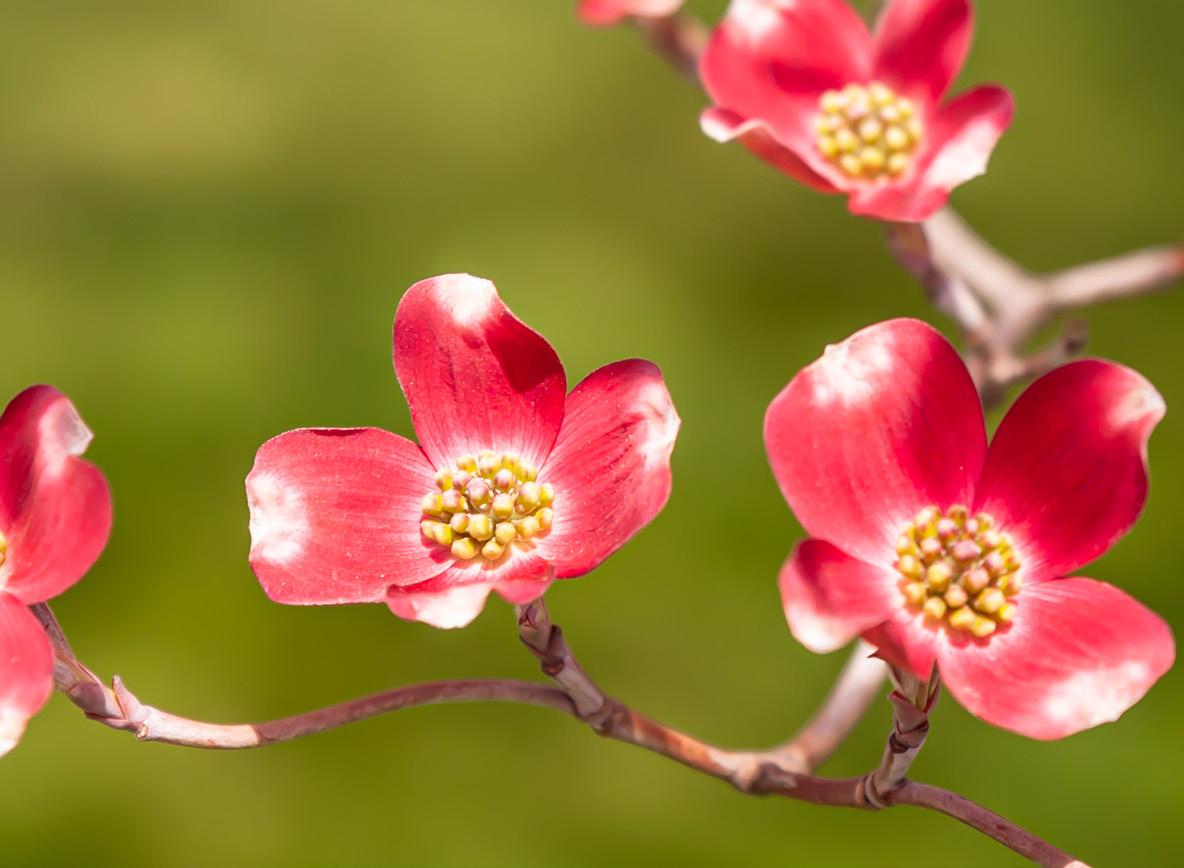
The Dogwood, a noble tree of 15 to 25 feet tall, is native to North Carolina. At least four varieties are native, with the favorite being the cornus Florida. In 1941 the lovely bloom from this tree was proclaimed the state flower of North Carolina. Dogwoods are found throughout the state growing as an understory tree especially along the w oodland edges.
The red twig and yellow twig dogwoods are also native to the U.S. Other varieties are not native like the cornus kousa dogwood from Japan and China and the Cornelian-cherry dogwood from Europe and Asia. The kousa dogwood blooms after it leafs out, while the Cornelian-cherry dogwood produces yellow flowers in the early spring.
Generations of homeowners and serious gardeners have adopted this flowering tree for its unique characteristics and association with the beginning of spring. For many, the popular choice has been the Cornus florida. Now there are many named cultivars, some even with variegation. Over the last 30 years problems such as anthracnose, dogwood boers, twig borers, ambrosia beetles have attacked the cornus Florida variety.
Todaygardeners often turn to these other species of dogwoods that are more reliable. The kousa has many of the characteristics of the Cornus florida, but it doesn’t mind a little more sun and is more drought tolerant. Locate dogwoods in full sun to part shade.
--The roots of the flowering dogwood are shallow and appreciate well drained, rich soil covered with two or three inches of hard-wood mulch. Butterflies and bees enjoy the flowers and your local song birds will appreciate the red berries.
Add one to your landscape today. Water your specimen properly and enjoy all that this North Carolina favorite has to offer.
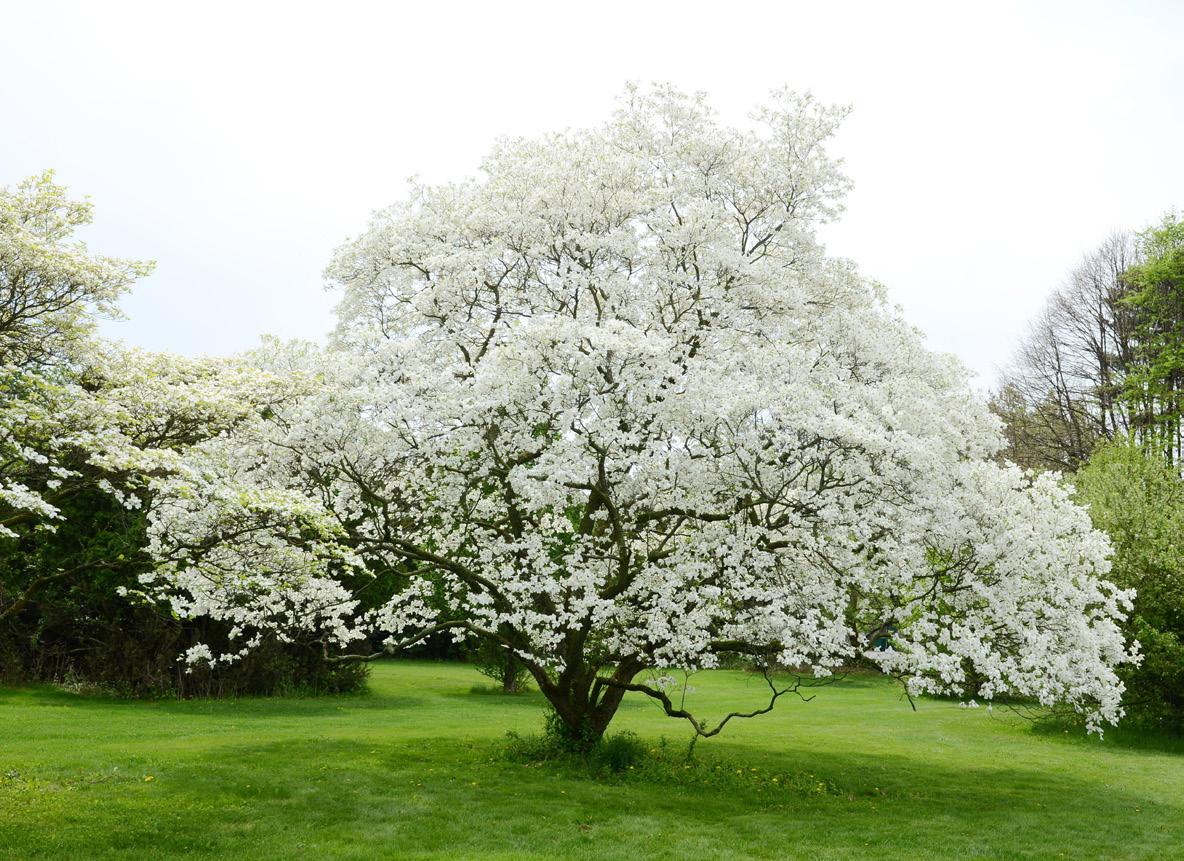
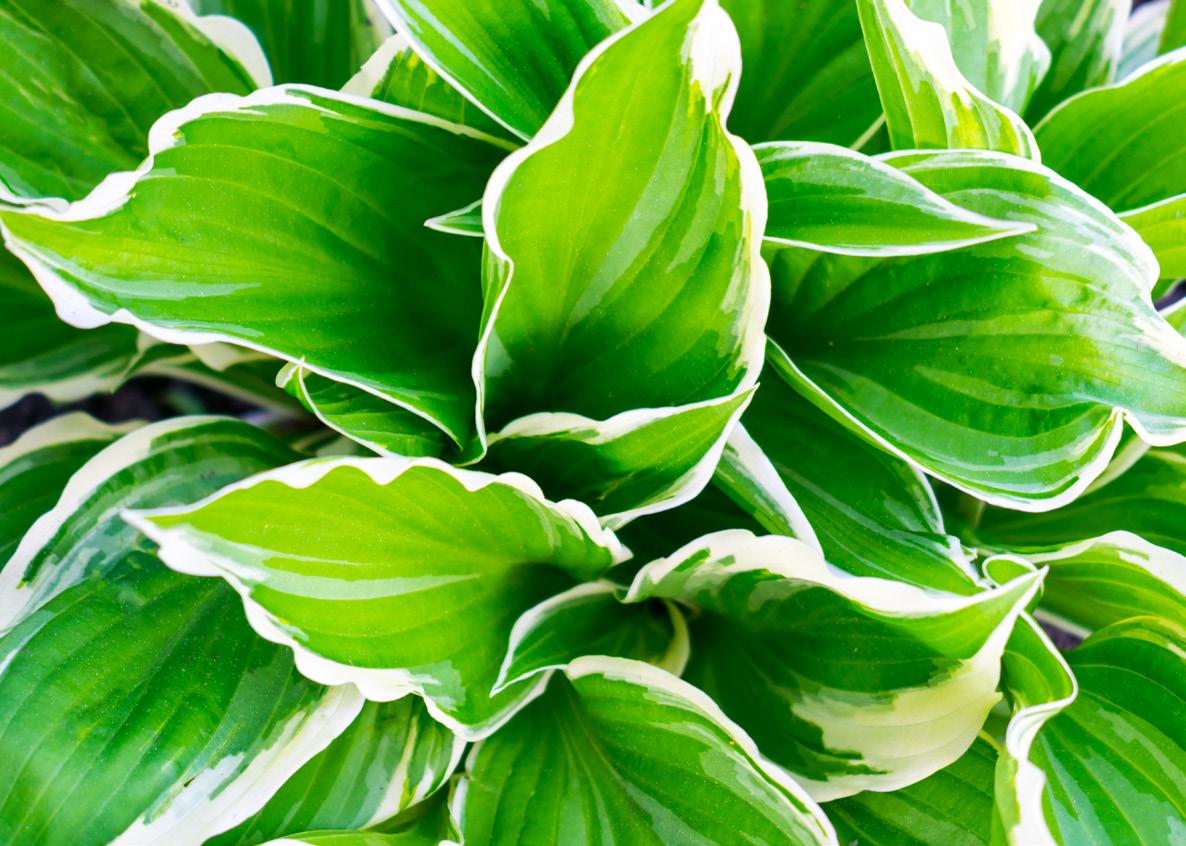
There are many interesting landscape plants grown in North Carolina. Hostas are among them. We have discussed them many times on the WPTF Weekend Gardener. There are many species and varieties from which to choose. There are numerous colors and sizes too. Our friend and nationally known gardening expert Tony Avent has developed many hosta varieties including one of my favorites “Elvis Lives”.
Hostas are not native, but we’re brought to this country from China and Japan. They are easy to care for and provide lush foliage in your garden.
Hostas like morning sun but grow best in partial to full shade depending on the variety. Plant hostas in May and August when their roots are actively growing. They prefer moist, but well-drained soil, rich in organic matter. A dose of good quality fertilizer like Espoma’s Plant-tone in the spring and a sprinkle or two when the bloom. A two to three inch layer of well-maintained hardwood mulch will work nicely too. They may bloom from late spring to early summer. Hostas really show off in your landscape when you plant them in mass. Some Permatill goes a long way in preserving these beautiful plants. It will aid in drainage and help prevent pests. Hostas don’t usually need dividing or pruning, but you may trim the dead leaves when they turn brown. They don’t seem to mind cold weather and in fact like a cold period for some dormancy.
Speaking of pests, voles love to dine on hosta roots. Other varmints include deer and rabbits that willingly dine on hosta leaves. Many garden center owners in our area recommend I Must Garden to help repel these garden pests. I always associate damage to hostas with slugs and snails. I’ve eaten snails in France. I wouldn’t recommend it. Not even ketchup helps. There is root rot in soggy soils and a few viruses that might infect hostas.
Buy hostas that say, “take me home!” from good garden centers in your area. They will provide a low maintenance plant that will give you years of pleasure.
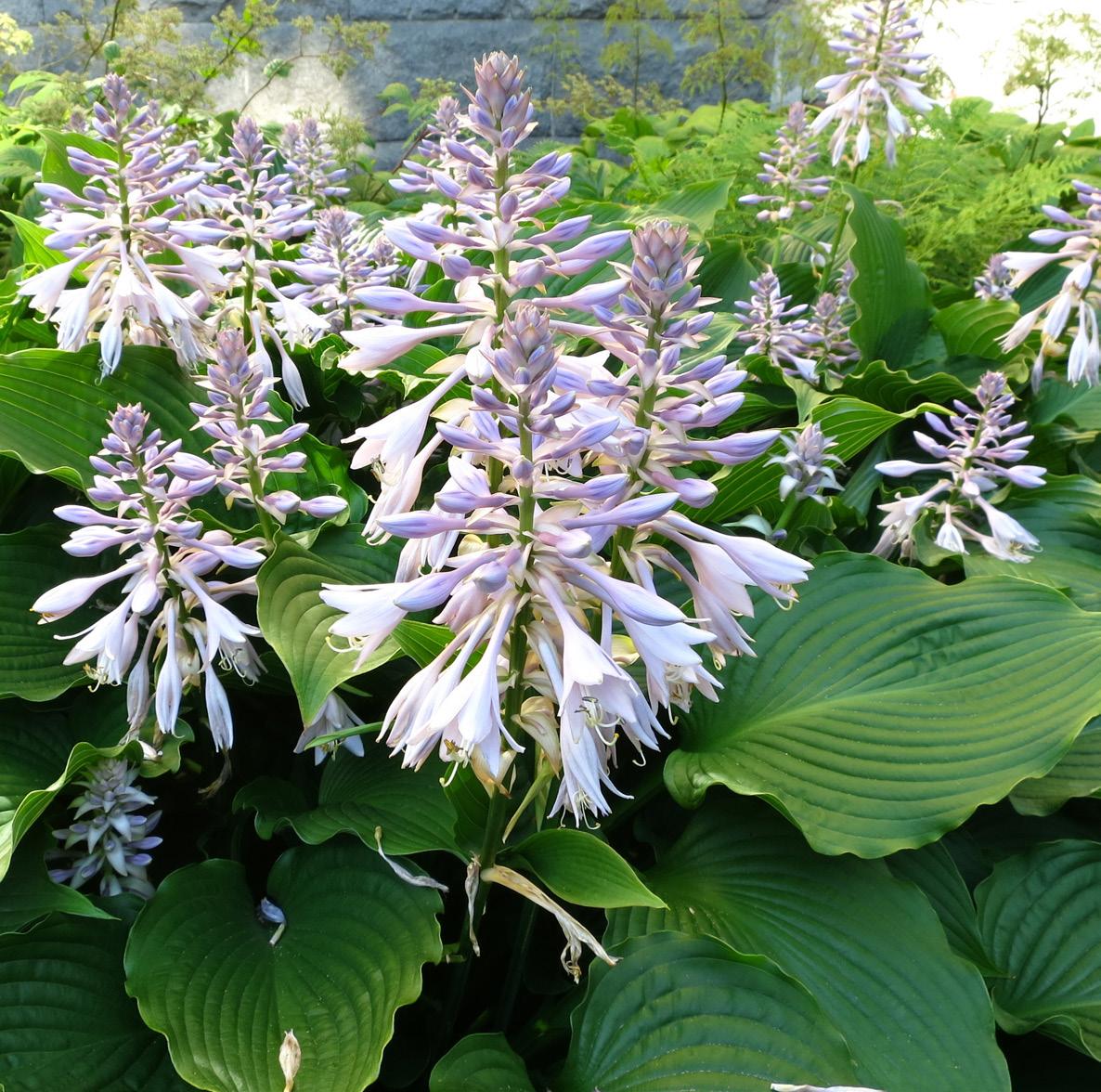

I am not a rosarian, in fact I am not as accomplished a gardener as I should be after hosting the WPTF Weekend Gardener for 40 years. We have one rose in our landscape and it’s a doozy! We have broadcast many remotes of the Weekend Gardener from Campbell Road Nursery in Raleigh over the years and Phil had a mature Tequila Sunrise on the side of the cabin at her old location that I loved. This multi-colored shrub rose is amazing. It only has moderate fragrance, but the deep yellow color with scarlet edged petals is breathtaking, especially in a mature plant with the first flush of blooms in the spring. Blooms on the Tequila Sunrise continually change colors. It is also very low in maintenance, a requirement in my yard. Shrub roses are considered hardy, vigorous growing varieties. Most of the other types of roses require more care.
In addition to the shrub roses like the Tequila Sunrise and even the much maligned Knock Out, there are climbers, tea hybrids, floribundas, grandifloras and miniatures. There are repeat bloomers and some varieties that bloom only once. Hybrid teas are probably the most popular. They certainly smell divine. The floribundas produce more flowers on each stem than the tea hybrids. The grandifloras grow vigorously but produce fewer flowers than the tea hybrids. Climbers, a mix of cultivars with a variety of characteristics, are favorites in the Tar Heel state. The masses of foliage and yellow or white flowers can be spectacular in the spring. The miniature rose varieties have been a big hit like dwarf cultivars of other plants. Most only grow up to 12 inches and can be used in the landscape or a container.
Roses do best in an area of the landscape that will see 6 to 8 hours of sun a day. They might thank you for a little afternoon shade since roses are probably happier in Michigan than North Carolina. Good air circulation is a must because roses are susceptible to fungus.

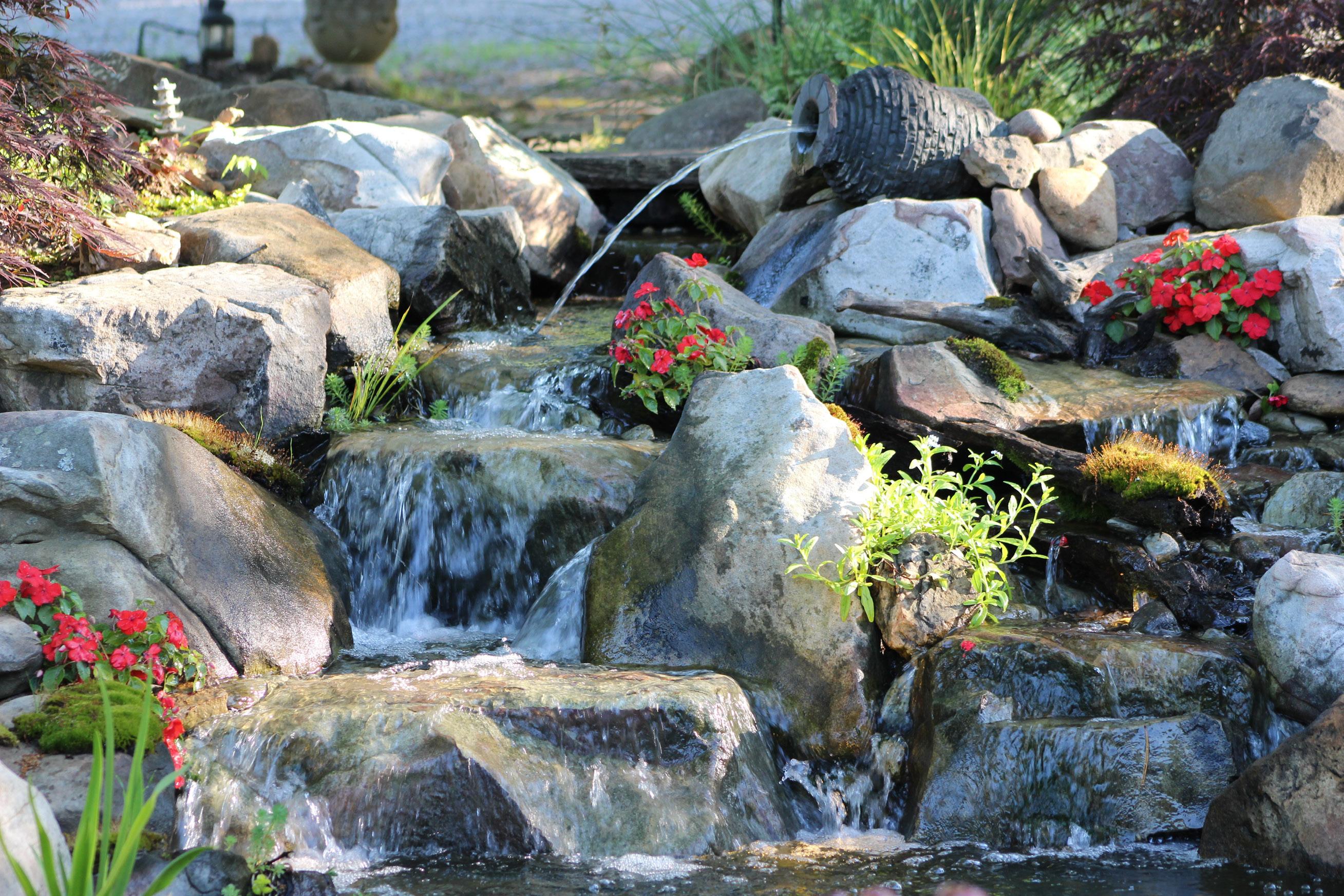



I met Maury O’Dell in 1976. I was 23 years old and had been a part time board-operator and announcer for a year at WPTF when Maury was hired to replace the great Bob Butler as afternoon drive host, who wanted to move to sales. Years later, Bob became President of Durham Life Broadcasting. I liked Maury instantly. He was 15 years older. (I was the baby of thestaff.) Anyway, I watched and listened. He was so darn funny and effortless as an ad-libber and disc jockey. I laughed a lot and learned a lot from him. But you can’t teach comedic timing and he certainly had a barrel of that.
He moved up quickly to the hallowed morning show in 1977. He also took on the famed Ask Your Neighbor talk show from the late Bart Ritner, the perfect vehicle for him. He could interact and “cut-up” with our listeners on a fun program. He excelled in everything he took on during his 26 year tenure at WPTF. But his career really took off when long-time sports director, the late Garry Dornburg partnered with him to become one of the top morning duos in the country. They played off each other brilliantly.
There was nothing fancy on the morning show all those years. Just frivolity and plenty of information from our award winning news staff, weather and traffic. Our listeners were informed and happy, a great way to start the day. You never knew who was going to end up as a guest. Maury talked to them all, famous or not. He traveled with groups of listeners to Europe several times over the years. The public and his many show sponsors loved him and knew whatever he endorsed was going to sell and would be the best.
Anyone who worked with Maury would have loved to have had his incredible talent and to have achieved all he did during his time at WPTF. I would love to have the talent of any of those legendary announcers I was privileged to learn from and work with. I’m just thankful to have all those memories, relationships and to have just survived. I was very sad the day Maury retired in 2003. Everybody from Governor Jim Hunt and Senator Jesse Helms to the average listener paid tribute to one of the best in the history of the industry.
Maury was 66, still healthy and at the top of his game. But radio had changed and he wasn’t interested in the controversy and shock jock that was taking over the industry. He decided to spend more time with his precious wife and daughters, play a lot of golf and spend time at the beach. A good retirement plan!


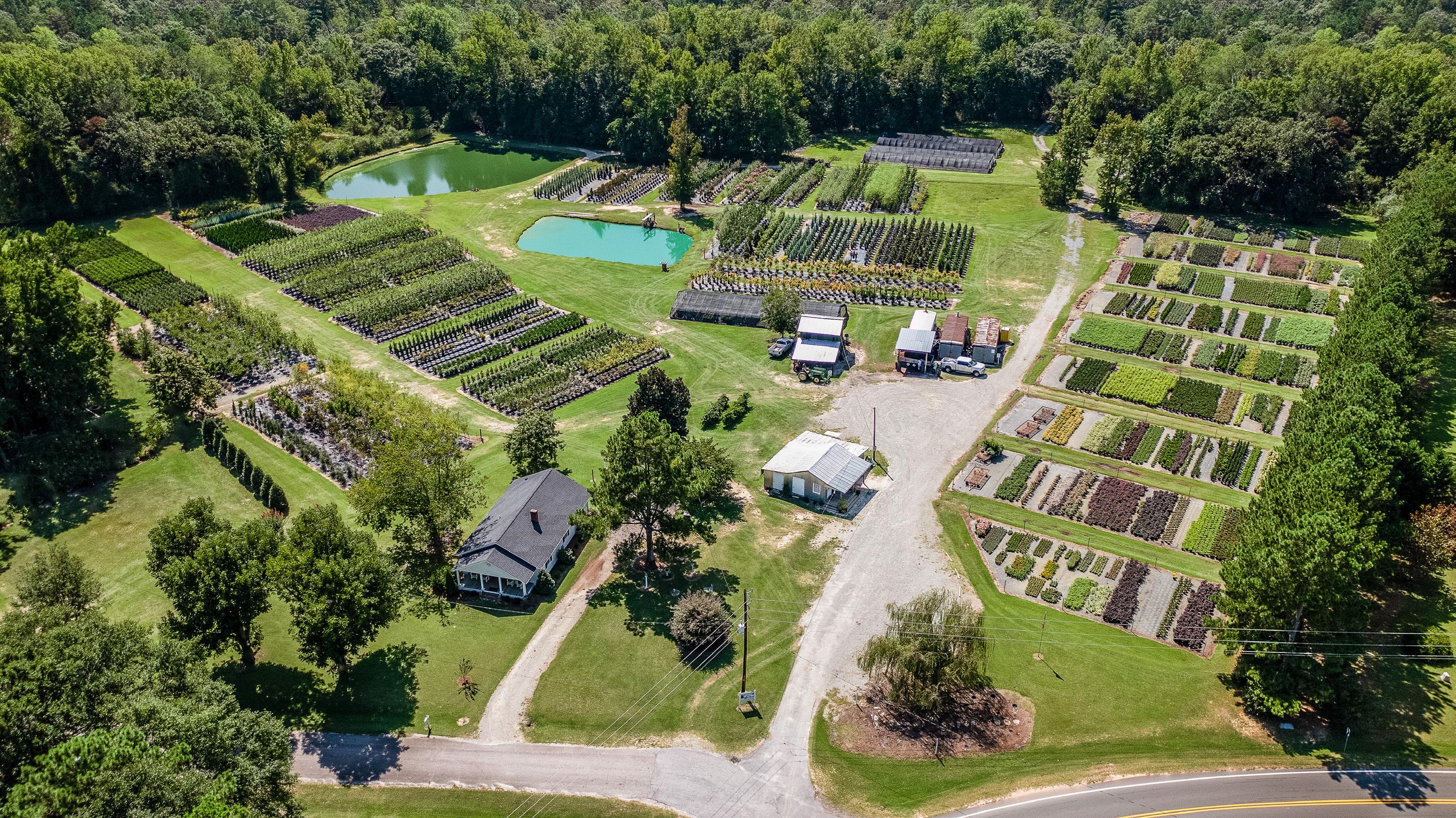

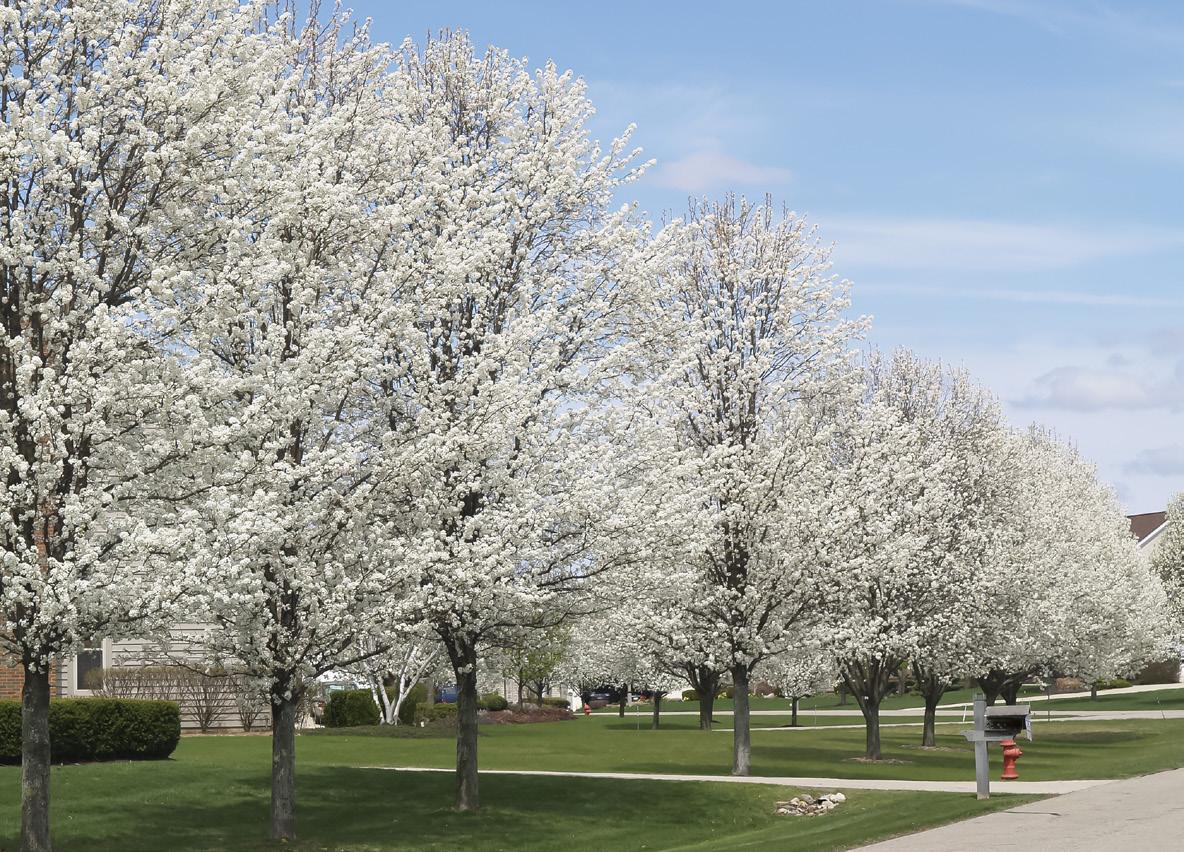
You have probably noticed all of the trees in private landscapes and in wooded areas covered in white flowers. Attractive, right? But there is an invasion going on across the land. An invasive species of pear tree. Bradford pears were planted for decades in North Carolina. Many of us added them to their yards. Their young silhouette was symmetrical, full of white flowers; but alas, we found those flower’s fragrance to be unpleasant and the limbs to be brittle. They lost their shape as we all do as we age. They aren’t planted anymore for those reasons and the fact that they have become a nuisance. NC State University scientists tell us that Bradford pears outcompete native trees and may breed with other varieties of pear trees creating trees with thorns. They also shade out other trees. This presents other problems like replacing trees that produce food for birds.
The state of South Carolina will ban Bradford pear trees starting in October. In the Tarheel state, the NC State Forest Service and several other groups teamed up to offer a bounty to remove Bradford pears from landscapes and to encourage replacement with native trees.
Most trees are great for our environment, but there are always troublemakers. No one wants an ugly, smelly tree in their yard. So consider getting rid of your Bradford pear today. Take your favorite young person to a nursery and pick out a native tree today!



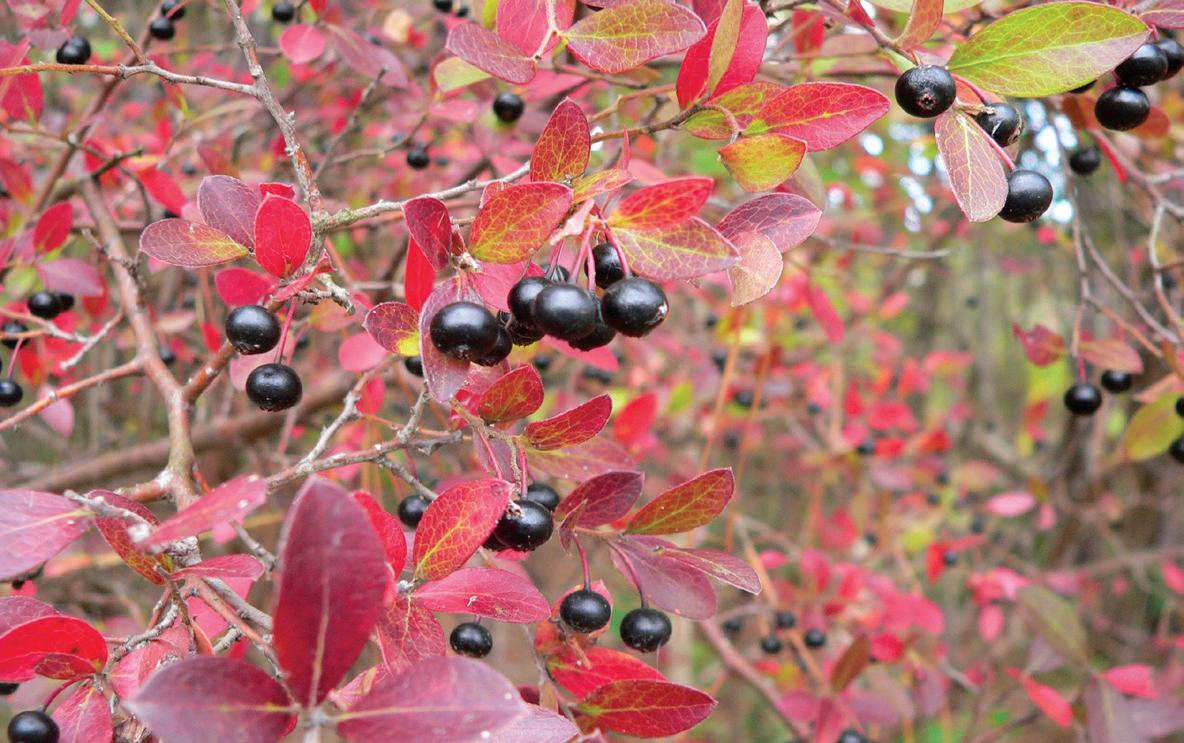
What’s not to like about a plant with the common name sparkleberry? Vaccinium arboreum is a large shrub that grows in the understory of dry oakhickory or pine forests throughout our Piedmont and Sandhills regions. It’s the tallest of our native Vacciniums—typically it’ll top out at 10 to 15 feet, but there are specimens reaching up to 30 feet tall.
Sparkleberry is a shrub that shines in the landscape throughout all four seasons. Each spring these shrubs treat us to showy clusters of fragrant white flowers. After a few weeks, these flowers are followed by fruit that mature into shiny black berries (thus the common name sparkleberry). While this fruit is technically edible, the berries are usually dry and mealy and somewhat bland or bitter. Folks have used the berries in jellies or to supplement other pie fillings, but really they’re best left for birds and small mammals to feast on in the fall and winter.
Like most shrubs in the blueberry genus, sparkleberry has remarkable fall color. This shrub can be semi-evergreen in milder climates, but here in the Piedmont, it typically puts out a gorgeous display of bright red and burgundy leaves each fall. Sparkleberry’s growing habit and interesting bark both add a lot of winter interest to the garden. These slow-growing shrubs often have gnarled and twisted forms that add great structure to a winter garden. The bark on older branches ranges in color from grey to rich red, deep brown, and orange, and really makes these shrubs stand out on wet winter days.
Vaccinium arboreum is a tough, long-lived shrub that is very heat and drought tolerant once it’s established. It needs a well-drained site but can handle a wide range of sunlight conditions, though it will flower and fruit more in a sunny spot. If you’re looking for a new shrub to add to your garden, sparkleberry might be a great fit, and will support many of our native pollinators and other wildlife, too.
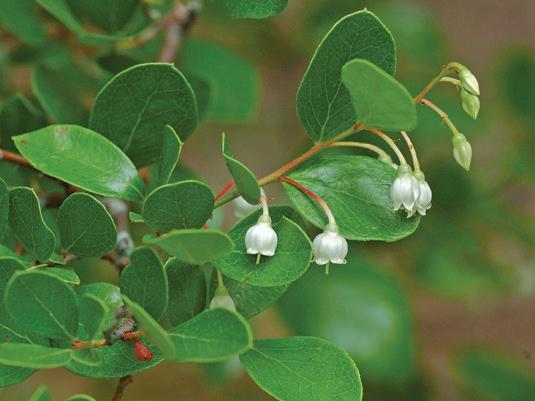
North Carolina Botanical Garden
100 Old Mason Farm Road
Chapel Hill, NC 27517
Open Tuesday – Saturday, 9 a.m.-5 p.m. and Sunday, 1-5 p.m. Find out more at ncbg.unc.edu







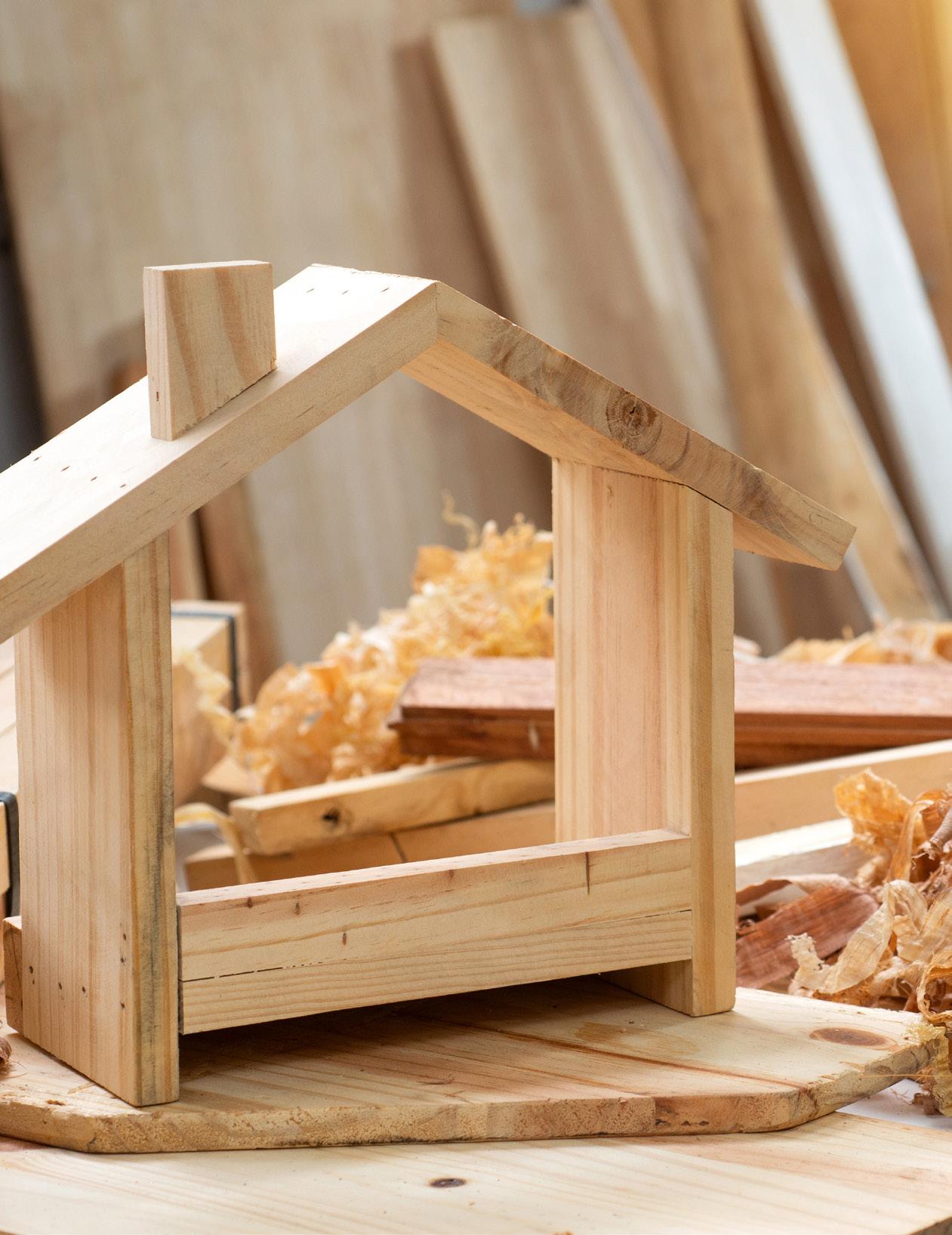
Does this TV commercial from a few years back ring any bells?
Cheryl (on the phone): “Well, it finally happened Zachary, somebody burned down my she-shed.”
Victor: “Nobody burned down your she-shed Cheryl”
Cheryl: “Well, my she-shed is on fire!”
Victor: “Your she-shed was struck by lightning!”
The insurance company that produced this ad introduced a word in the home improvement world that many commoners hadn’t quite heard just yet. The “She” Shed.
Wait a second, you mean to tell me that if I needed/ wanted a shed outside, that it didn’t have to house a lawnmower or other garden tools?
Allen Rynish, owner of NC Shed Builders in Durham says that he’s seen a trend over the last few years of the sheds he’s built taking on a different life of their own.
“Over the last few years, we’ve built a fair amount of sheds across the board,” said Rynish. “From the simple shed for someone on a tight budget to something a little more elaborate you can put in your garden, even something that matches the house architecturally. What has taken off for us, is what we call an Office Shed. You can call it a Man Cave or a She Shed, but basically, you’re adding another room to your house without the cost of a home addition.”
Allen took the time to do the math and it seems like a no-brainer.
“If you take the average family, Mom, Dad, two kids, and a dog (or cat depending on preference), and they live in a three bed/two bath house and one of those parents are now working from home. Somebody’s office is a closet,” said Allen. “The cost of a home addition around here could be anywhere from $100,000 to $200,000. We should be able to do everything in a shed, insulate it, put dry wall to finish it and keep the cost under $50,000 that would save the customer a lot of money.”
The recent trend of homeowners upgrading their outdoor spaces with kitchens, hardscapes and water features among other ideas, the shed has also become more of a vital part of that renovation no matter the purpose.
“One thing that I really like to see is when our customers make the deliberate attempt to have the storage shed match the architecture of the home,” said Allen. “Often times, that’s when it comes in to adding specific siding, windows, changing up the roof stock a little bit, so it looks seamless with the home.”
Going back to the famous TV commercial, the term She-Shed. Allen talked about a couple of recent customer experiences.
“Just recently, I had one customer that I spoke to who bought a shed from us a couple of years ago. She called her shed, a “Bird Shed”. The customer said, I give my husband a little bit, but it’s mostly my shed. The shed was used to store the necessary items to feed all the wild birds in the area. We had one we customized for the client to put a kiln in the shed for their pottery. It all comes down to the imagination of the customer. Our goal is to build the best shed you envision so you can use it for whatever purpose you purchased it for.”
And yes, Cheryl’s burning shed was covered by that insurance company in their policy and Victor helped her get a new She-Shed in the end, and they lived happily ever after.
If you were building a shed, what use would you build it for?
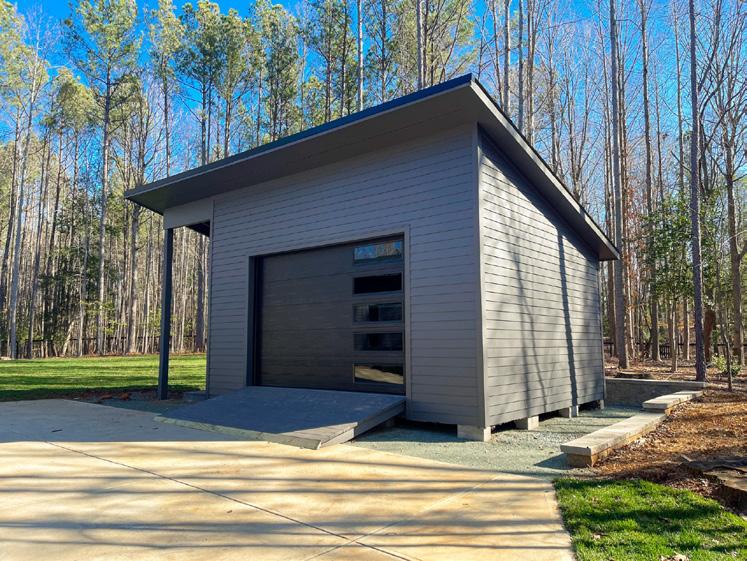


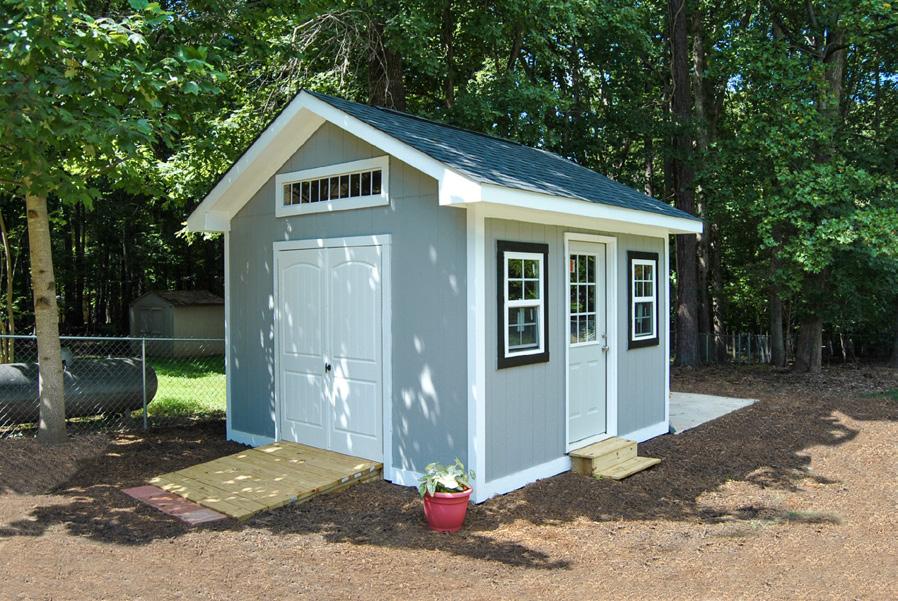


I suffer from seasonal allergies as do many of our WPTF Weekend Gardener listeners. Plants in the Tar Heel state get a lot of blame for these maladies. The folks at North Carolina State University tell us that pollen is the fine powdery substance produced by the male parts of a flower. It’s carried by wind, water, insects and other animals to the female parts of the same flower, or a different flower of the same species, in order to produce seed. Pollen also makes its way to our noses, causing some of us to experience allergic reactions.
In North Carolina, our horticulture friends tell us that cedar and elm trees produce pollen early in the spring season, followed by maple, oak and pine trees. The ever-present white and loblolly pines produce a great deal of that yellow pollen we see on our cars and everything else, the pollen grains are larger and are not responsible for causing allergic reactions. It’s the hardwood trees such as maple, elm and oak that produce smaller pollen grains. These grains can be more easily blown into the air by wind, meaning they’re also more easily inhaled by humans and more likely to cause an allergic reaction.
Then there’s the timing of pollen production in North Carolina. I’m told by the wonderful gardeners on the show that it varies based on temperature, region and type of plant. In the Tar Heel state, trees and grasses typically produce pollen between March and June, while ragweed produces pollen between August and November. This spring, trees began producing pollen about three to four weeks earlier than usual, in mid to late February, due to a mild winter and an early warming trend.
Just remember when you are complaining about the sneezing and Itchy eyes, we need pollen to pass from plant to plant to keep our landscapes flourishing. Now don’t you feel better?


















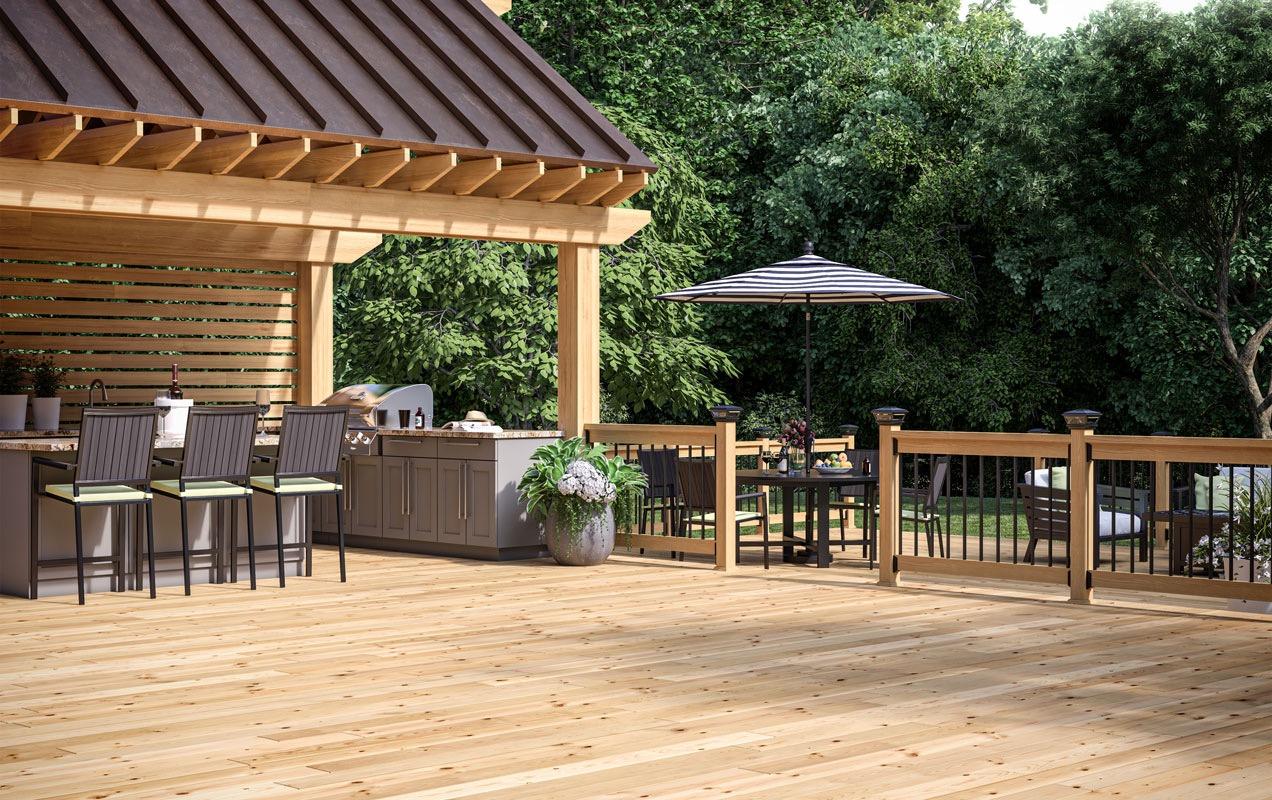



























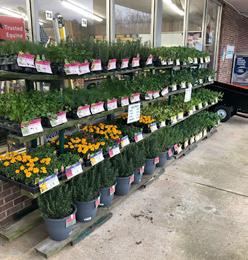
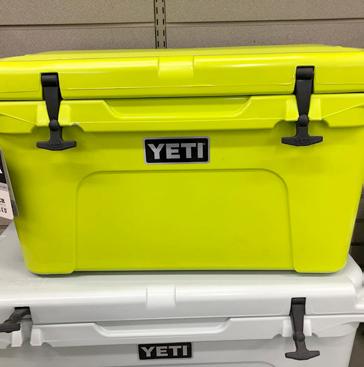

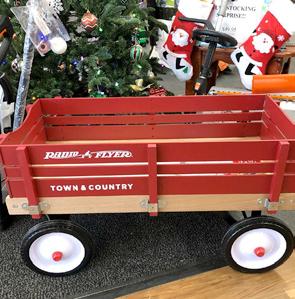
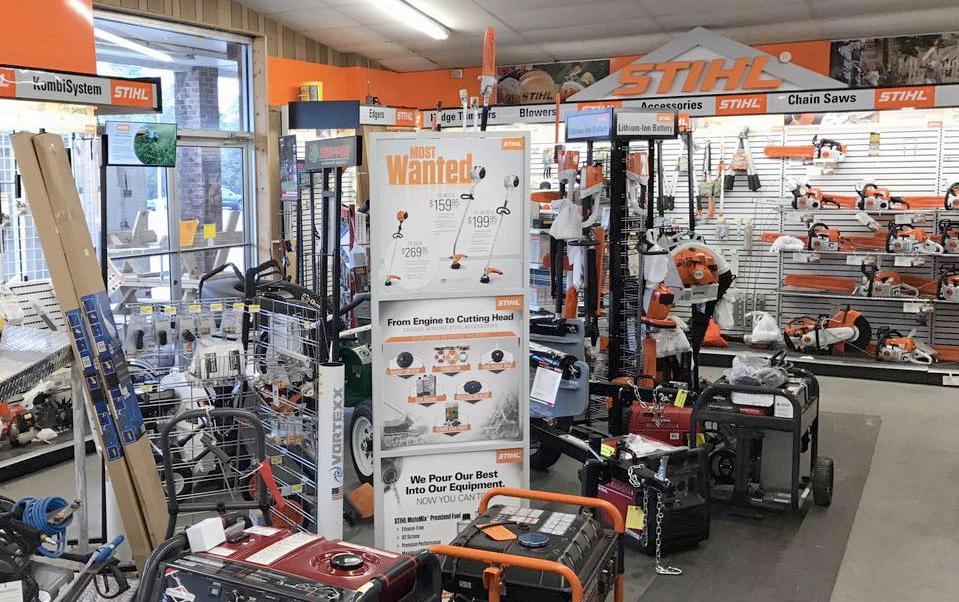
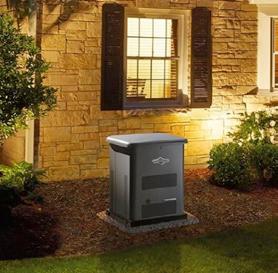
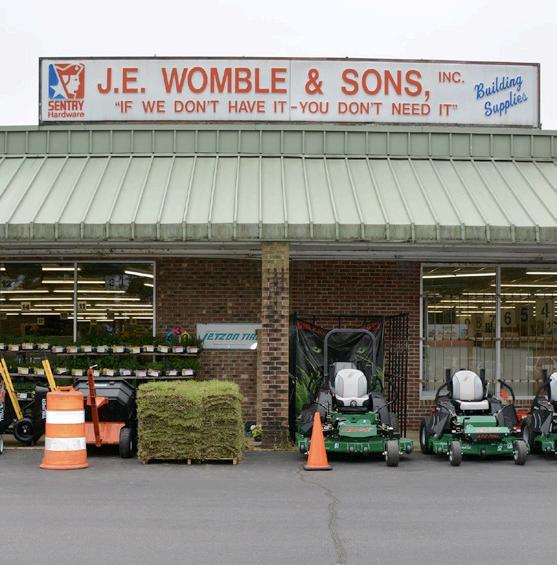




Insulation makes homes more comfortable while reducing cooling / heating costs. There are many different types of insulation and each type has advantages (and disadvantages) depending on the unique aspects of each home.
Fiberglass insulation is made of extremely thin glass fibers and is available as loose-fill or rolled batts. It essentially works like a sponge, absorbing and holding heat, helping to prevent it from transferring into your living space in summer or out of your living space in winter. But like a sponge, it can become saturated (in this case with heat), at which time any remaining heat will pass through. If you want improved performance with fiberglass insulation, you need to add more of it, to essentially make the ‘sponge’ bigger so it can hold more heat. Fiberglass insulation works best against conductive heat transfer. It is not effective against radiant heat transfer. It can perform moderately against convective heat transfer if combined with air-sealing any utility penetrations. Fiberglass insulation deteriorates naturally, so it may eventually need to be added to, repaired, or replaced.
Radiant Barrier is a foil insulation designed to prevent the transfer of heat derived through radiation. It does this in two ways: emissivity and reflectivity.
Radiant energy comes from the sun. Shingles and wood (that comprise your roof) have very high emissivity: they absorb a lot of radiant energy which converts into a lot of radiant heat. Radiant heat is the primary type of heat that accumulates in your attic in summer.
Radiant Barrier has a very low emissivity, so it absorbs very little radiant energy and produces very little radiant heat. Radiant Barrier is also highly reflective, reflecting 95% of radiant heat. It is a permanent insulation that does not deteriorate over time.
Radiant Barrier is usually installed in combination with air sealing and fiberglass insulation, proving good performance against radiant and conductive heat transfer with moderate performance against convective heat transfer.
Spray Foam provides superior R-value performance. When installed in an attic, the attic is essentially brought within the home’s thermal and pressure boundary and, for this reason, Spray Foam provides the best year-round attic temperature moderation. It provides good performance against conductive and convective heat transfer. It indirectly provides moderate performance against radiant heat transfer. While Spray Foam is generally considered the most effective insulation, it is also the most expensive. The most cost-efficient time to install Spray Foam is during new construction. It may not, however, provide the best return on investment for retrofit into existing homes depending on the circumstances and attic construction.
Spray Foam is a chemical process, requiring special equipment and certified training for installation. Home occupants are required to vacate the home during the installation and time to dry/cure. Unlike fiberglass and Radiant Barrier, Spray Foam will burn if there is a fire on the roof or in the attic. If it will remain exposed, e.g in a storage attic, the application of a flame retardant may be required which adds further to the cost.
Spray Foam insulation may also increase costs related to roof repairs / roof leaks due to delayed identification of leaks and because any section of roof sheathing needing replacement will pull out the corresponding section of spray foam as well, requiring spray foam repair in addition to the roof repair.

Not sure which insulation will be best for your home? Most reputable insulation companies will offer free inspections and estimate and will be able to provide professional recommendations to meet your needs and budget.
Fiberglass Insulation ‘Pros’: Often the most affordable insulation, versatile, effective when professionally installed, good against conductive heat transfer
Fiberglass Insulation ‘Cons’: The least performing type of insulation, not good against radiant heat transfer and only moderate performance against convective heat transfer if combined with utility penetration air-sealing, deteriorates naturally over time with corresponding drop in performance
Radiant Barrier ‘Pros’: cost efficient, very effective against radiant heat, transferable lifetime warranty, Class I / A fire safety rated
Radiant Barrier ‘Cons: Limited performance against conductive heat transfer
Spray Foam ‘Pros’: highly effective, best moderation of year-round attic temperature
Spray Foam ‘Cons’: highest cost, chemical application requires vacate during install, not fire resistant without added thermal barrier, can increase the cost of roof repairs


King’s Auto Service reminds you that the summer heat is hard on your car. If your battery is weak, the heat speeds up the failure rate. For your A/C, schedule a summer checkup today to stay cool!
If you are driving a Toyota Prius or any other hybrid vehicle, the certified hybrid technicians at King’s are ready to diagnose and give you available options for a high voltage battery pack replacement for less than the dealer will charge for a replacement. This usually occurs around 150,000 miles. To schedule a courtesy battery analysis… Call 919-205-9641 today.
Servicing all domestic and Asian models. King’s Auto Service easy to find at 1039 North West Street in downtown Raleigh and at KingAutomotive.net. King’s Auto Service, Raleigh’s most reliable auto care since 1946.

Roofwerks






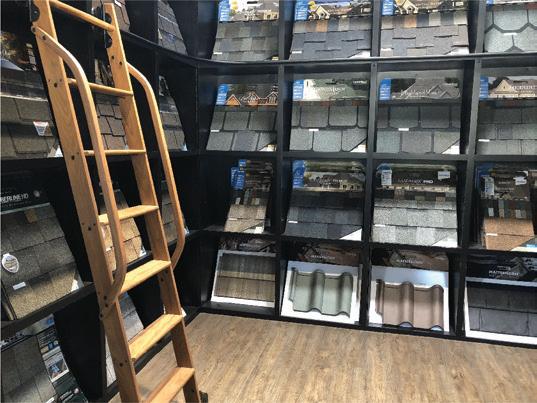

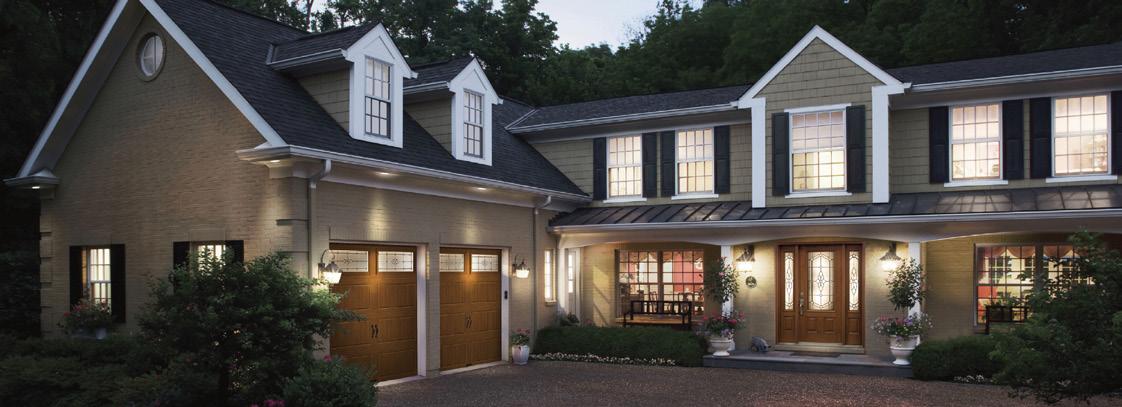

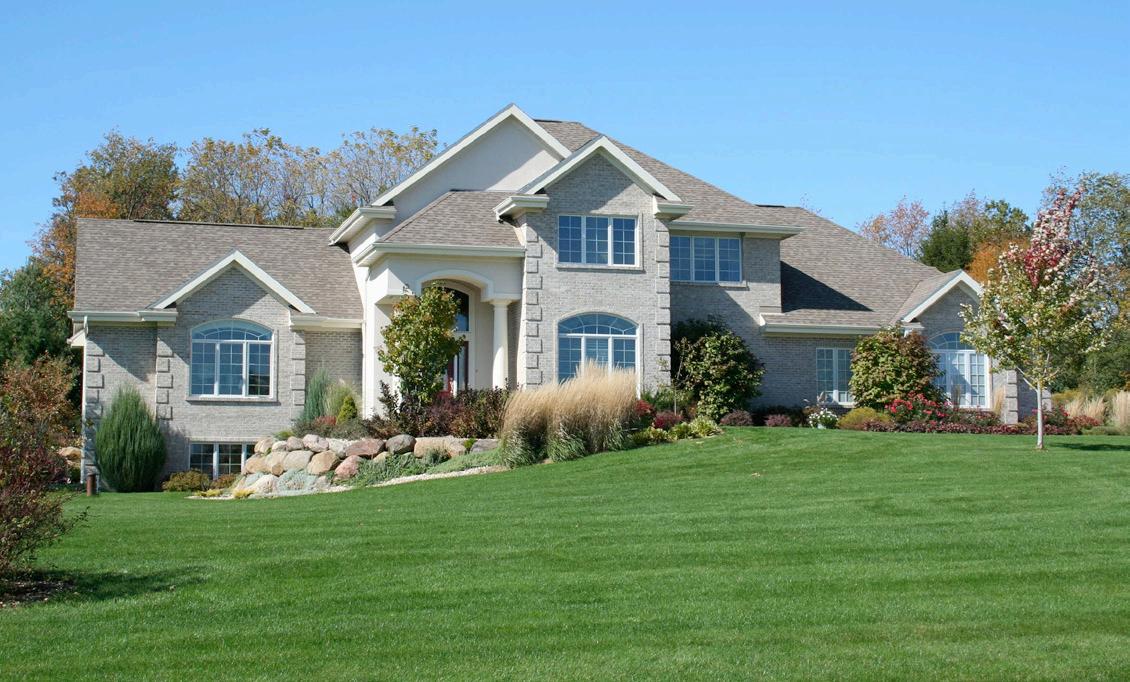
ANNOUNCING OUR NEW SERVICE FOR HYBRIDS. We are certified to refurbish Hybrid Vehicle Battery Packs.


Before you replace your Hybrid Battery Pack call King's for options. are ready to diagnose and give you available options for a high voltage battery pack replacement for less than the dealer will charge for a replacement. Call King's to schedule a courtesy battery analysis.
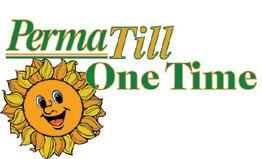
ATTENTION HYBRID OWNERS!
ATTENTION HYBRID OWNERS!
ATTENTION HYBRID OWNERS!
King’s Auto Service can refurbish your battery pack for less than half the cost of a replacement at the
King’s Auto Service can refurbish your battery pack for less than half the cost of a replacement at the dealer. Why go to the dealer when King's Auto Service can refurbish your existing battery pack for less than half the cost! Prius and hybrid owners …call King's Auto Service today to schedule your courtesy battery analysis. King's will also
your battery, cell balance and antifreeze during this important check up.
King’s Auto Service can refurbish your battery pack for less than half the cost of a replacement at the dealer. Why go to the dealer when King's Auto Service can refurbish your existing battery pack for less than half the cost! Prius and hybrid owners …call King's Auto Service today to schedule your courtesy battery analysis. King's will also inspect your battery, cell balance and antifreeze during this important check up.
Why go to the dealer when King's Auto Service can refurbish your existing battery pack for less than half the cost! Prius and hybrid owners …call King's Auto Service today to schedule your courtesy battery analysis. King's will also inspect your battery, cell balance and antifreeze during this important check up.
(919) 834-0748



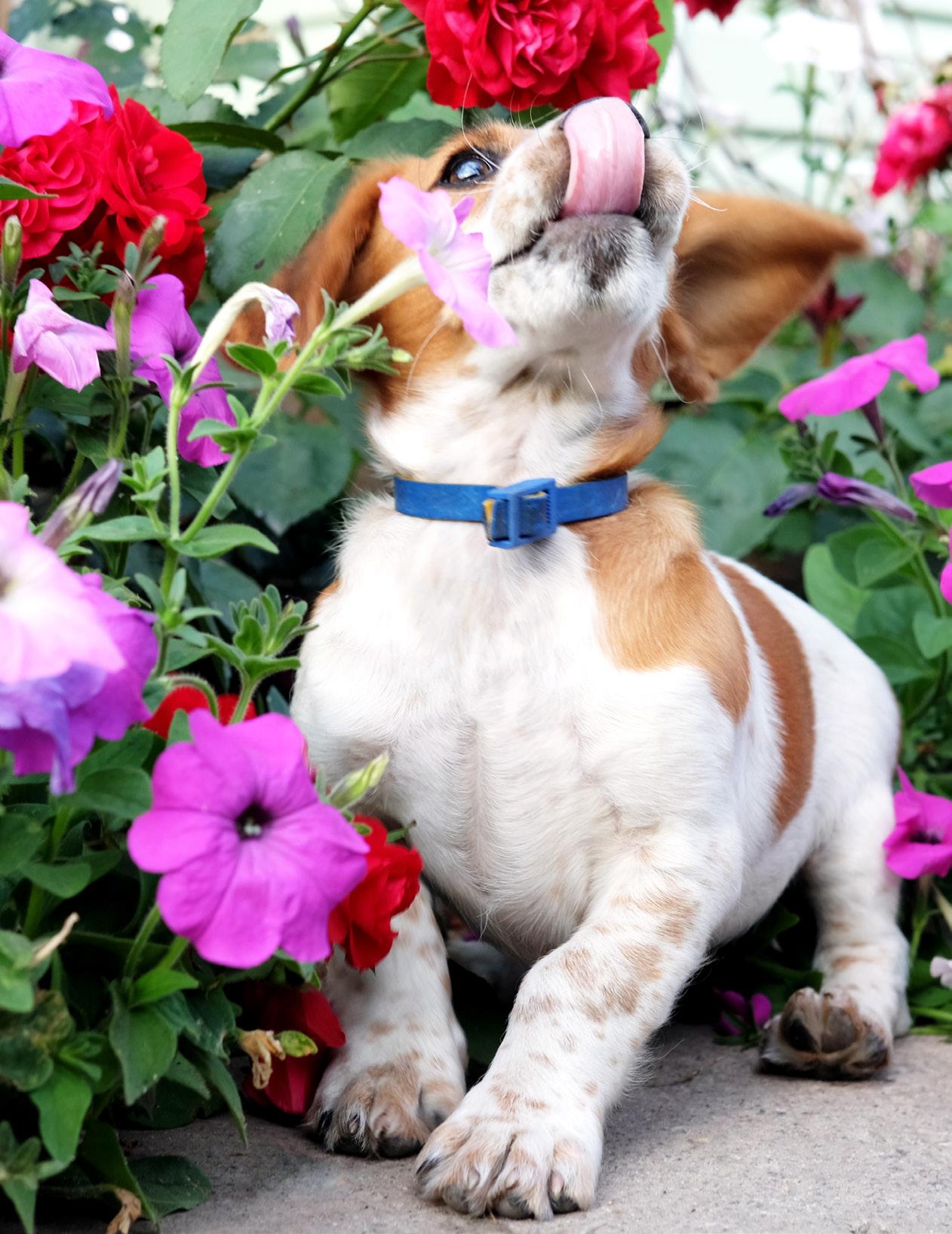




Hi I’m Cregg “The Floor Guy” from Making Your Home Great and owner of American Dream Flooring and Tile. At American Dream Flooring and Tile we know what is important to pet owners. We are pet owners too, and we love our pets just as much as you do! Having floors that are “Pet Proof” and “Pet Safe” are important. Thats why we pride ourselves on offering products that will stand up to whatever your pets can dish out! Flooring that is easy to clean and looks as beautiful after a day of play as it did on the day it was installed! Not only durable but safe.
Did you know that many types of flooring can be toxic to certain pets? Some of the chemicals used in the manufacturing process can off gas fumes that can make pets sick and even worse! At American Dream Flooring and Tile we have a complete line of flooring options from Carpet, Waterproof Laminate, Luxury Vinyl Plank and Hardwood that you can be assured will provide a durable and safe floor for you pets and your home for years.
Products like Mohawk Smartstrand carpet are OEKO-TEX certified to be free from harmful chemicals. It has has built in NANOLOC technology making it the most durable and easy to clean carpet on the market!
Mohawk SOLIDTEC Luxury Vinyl Plank Flooring comes with a LIFETIME surface and subfloor warranty. It also is backed by Mohawks Industry leading “ALL PET” warranty covering all pets, all accidents, all of the time! But there is more....
Mohawks PURETECH Resilient offers the beauty of hardwoods with a LIFETIME Waterproof and Pet Scratch Warranty! It is also made of 70% total recycled content making it the most Earth and Pet friendly flooring available!
So don’t trust your flooring or your pet’s safety to just anyone. Trust the pros at American Dream Flooring and Tile, “Raleigh’s Most Trusted Flooring Professionals! Visit us online at www. americandreamfloor.com or call 877-6-FLOORS to schedule your FREE CONSULTATION today!







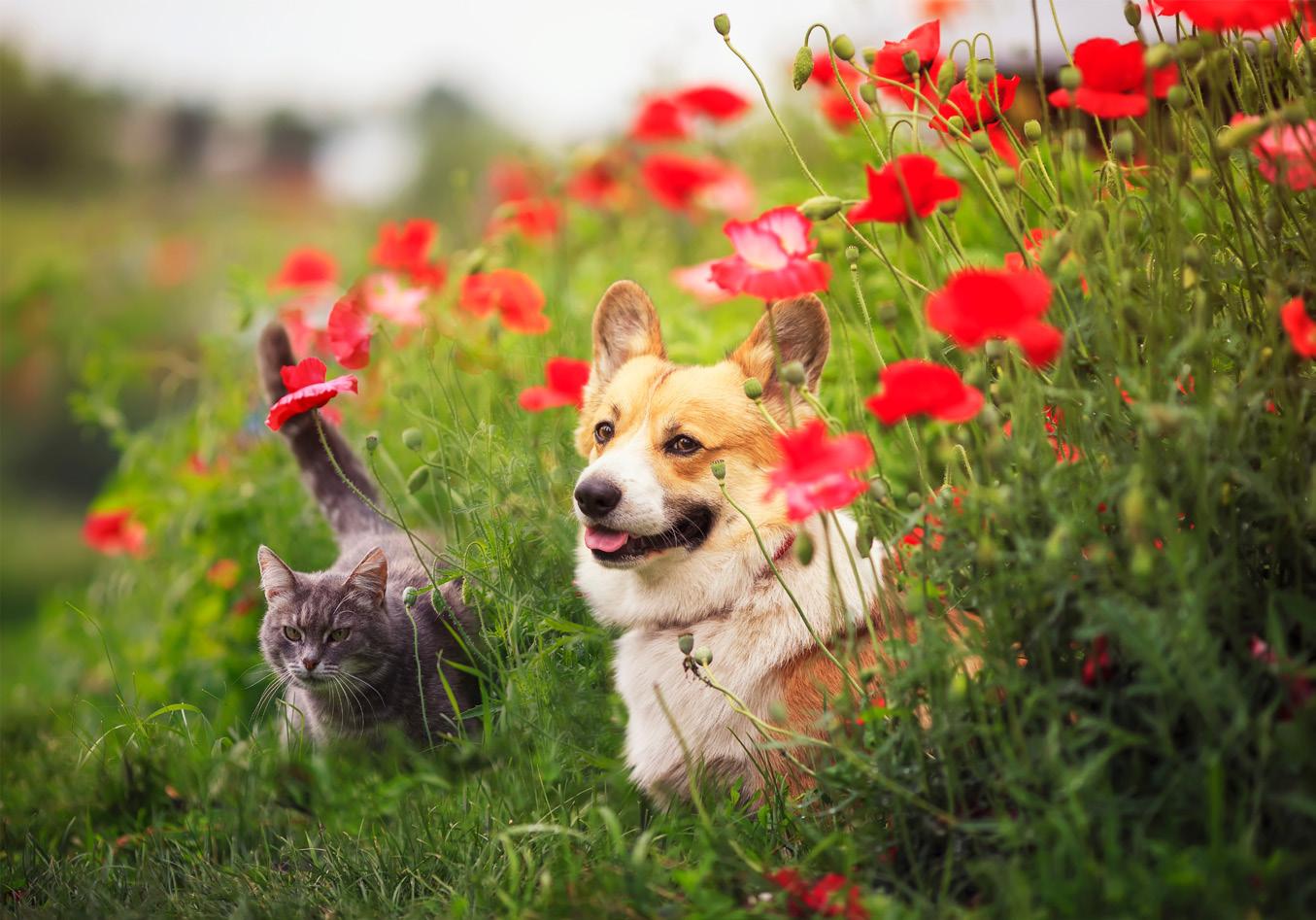

Numerous dog-safe plants are readily available at local home and garden or hardware stores in various forms such as seeds, starts, or potted plants. Additionally, seeds can be conveniently purchased online from retailers like Burpee, Amazon, and other gardening websites.
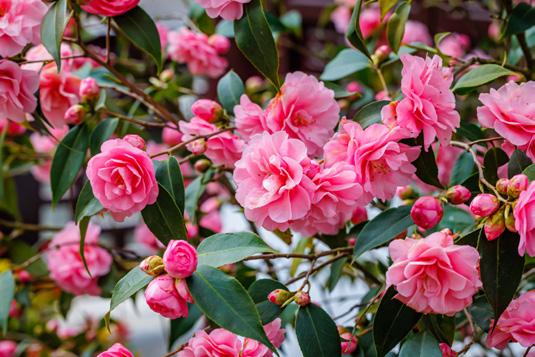
Camellias, flowering shrubs, require some initial effort for establishment but subsequently return year after year with minimal maintenance. They thrive in partial shade and, once mature, can withstand periods of little watering.
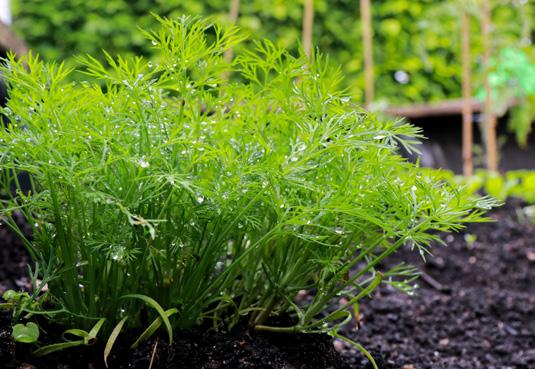
Dill, commonly used in culinary dishes, is not only safe for human consumption but also for dogs. This herb, known for its feathery appearance, requires ample space to grow.

Garden marigolds not only enhance the beauty of your garden but also attract bees for pollination and act as a natural pest deterrent.
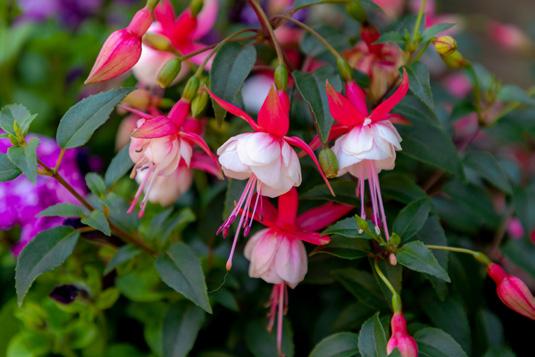
These elegant pink and purple flowers flourish in hanging baskets, particularly in mild, temperate climates like the Pacific Northwest.
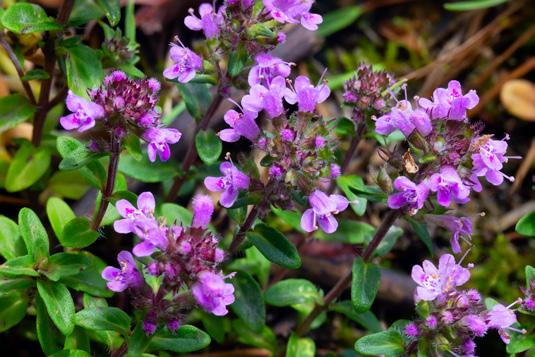

While magnolias are often associated with large trees, they also thrive as bushes, offering spectacular blooms in various hues.
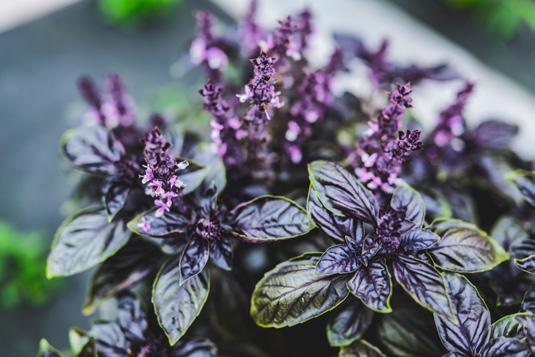
Purple basil not only adds flavor to dishes but also brings vibrant color to garden beds, requiring adequate water and sunlight for growth.
As a practical herb, thyme serves as a perennial plant requiring minimal attention and acts as an effective ground cover.
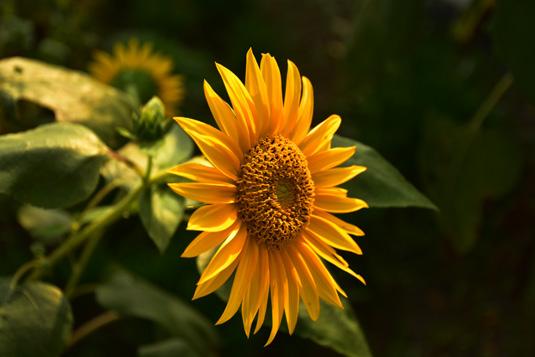
Sunflowers, available in numerous sizes and colors, thrive in sunny locations with sufficient water and attract birds as the seeds mature.
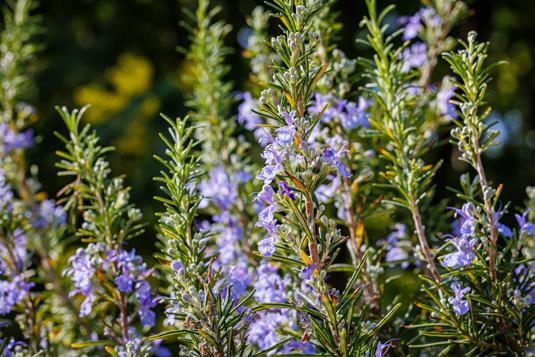
Creeping rosemary varieties serve as hardy ground cover, releasing a pleasant aroma when brushed against.
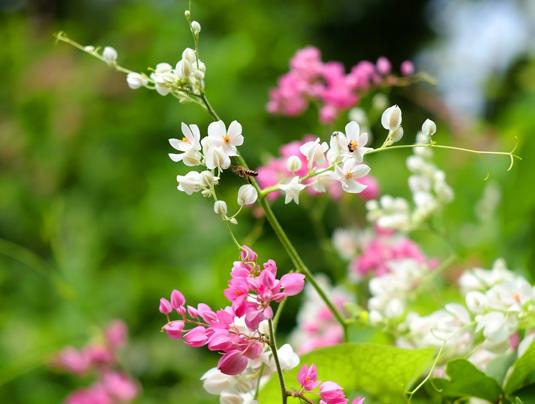
With low mounds of leaves in various shades and tiny flowers on long stems, coral bells add visual appeal to gardens.
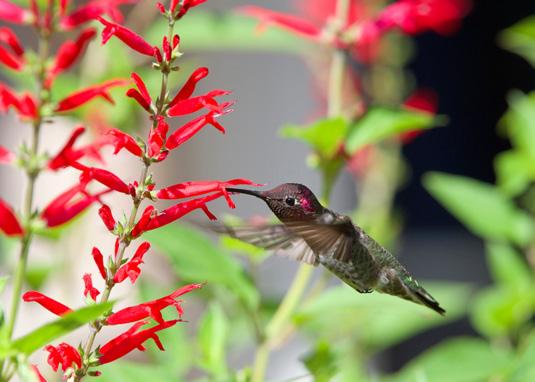
Pineapple sage, with its delightful fragrance and pink tubular flowers, is a favorite among hummingbirds and a versatile ingredient in culinary creations.
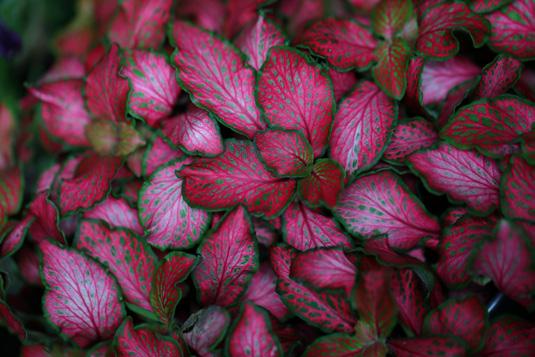
This low-growing, shade-loving plant adds a pop of pink to gardens and can thrive as a perennial in warm climates.

Fennel, known for its licorice-like flavor, serves as both a tasty addition to dishes and a safe plant for dogs.
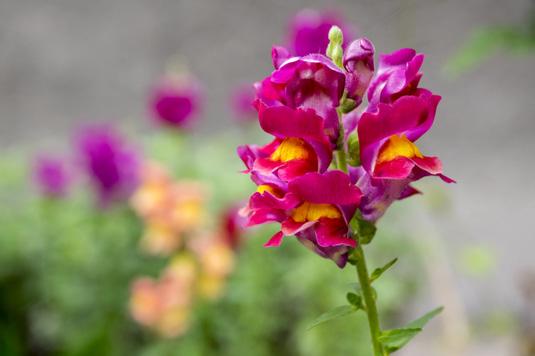
Easy to grow from seed, snapdragons produce tall stems with colorful flowers, suitable for both garden display and cut flower arrangements.

Nasturtiums, cherished for their edible flowers with a spicy flavor, thrive in various soil conditions and add elegance to garden boxes and rock walls.
Regardless of your gardening space, whether a spacious backyard or a sunny windowsill, we hope these plant selections provide both relaxation and safety for your pets. Happy planting!

During the winter, social media abounds with videos of pups awkwardly walking with puppy booties, or kitties sliding on icy surfaces. And, although the videos are meant to be humorous, there is a serious and potentially dangerous side of walking on snow, salt, and ice. For our pets those dangers intensify in the summertime.
The American Veterinary Medical Association (AVMA) reminds pet owners that if it is hot outside for you, it is even hotter for your pet. The group advises that special attention is paid to pets’ paws, and any body parts that touch the ground. This could include a pet’s tail or stomach as well as its feet.
Dr. Lori Teller, DVM, DABVP, Immediate Past President of the American Veterinary Medical Association, says all pets are susceptible to burns of varying degrees in the summer. The biggest thing, she says, is to use common sense and to recognize the signs of heat stress. The most important thing to do is to avoid the hottest times of the day. When you do take your dog for a walk, she says, try to do it early in the morning or later in the day, after the pavement has had a chance to cool down. Be conscious of the surface on which your pet is walking. Dr. Teller says, “(Keep) in mind that asphalt, concrete, dirt, sand, even artificial grass can get really hot and burn your dog’s paws. Walk on grass, real grass, whenever possible.” Dr. Bradley J. Waffa, Co-Founder and Chief Medical Officer of Truss Vet Veterinary Urgent Care in Durham, North Carolina, advises pet owners to keep other surfaces in mind as well, like boat docks, truck bedliners, and manhole covers.

Just like human beings, pets can suffer different degrees of burns from mild to severe. Dr. Teller, who is also a Clinical Professor of Veterinary Medicine at Texas A&M University’s School of Veterinary Medicine, says that even the most “mild” burns are still serious and could pose long term health issues. Paws that start as pink and raw can eventually develop ulcers and become torn if left untreated.
And, as more people are out in the summertime so is the amount of litter. Dr. Waffa says, “Heat is not the only risk to your dog’s feet. Be sure to avoid broken glass, thorns, and other potentially sharp debris.” He also warns that booties are not always the best option for protection as “...they can potentially create their own problems if they rub or restrict circulation. These are generally best fitted with the help of a veterinarian.”
And, any color paw pad can get burned. Dark paws, says Dr. Teller, are just as vulnerable as light paws. Paws should be checked at the first signs of distress. A pet with burned paws may lick the area, favour it, limp, or even refuse to walk. If you notice that your pet has suffered damage to its pads, Dr. Teller suggests gently washing the affected area with water and a mild dish soap, shampoo, or detergent, and immediately following up with veterinary care. “A gentle flow of water will help get the most dirt and debris out of the pad and assist with healing.” Untreated injuries can lead to infection and more serious problems. For that reason a veterinarian will often prescribe an antibiotic for burns. If the burn appears to be serious Dr. Teller suggests letting the vet clean the wound so as not to cause additional damage.

Dr. Waffa says, “Just like people, some dogs have more sensitive pads than others. The protective surface of the paw pad toughens with use in the same way calluses form on human feet. So, if your dog is active and regularly running on concrete, their pads will be tougher than if your dog is a couch potato or gets carried everywhere. Listen to your dog!” If your dog is pulling harder on the leash than usual he or she may be trying to tell you something.
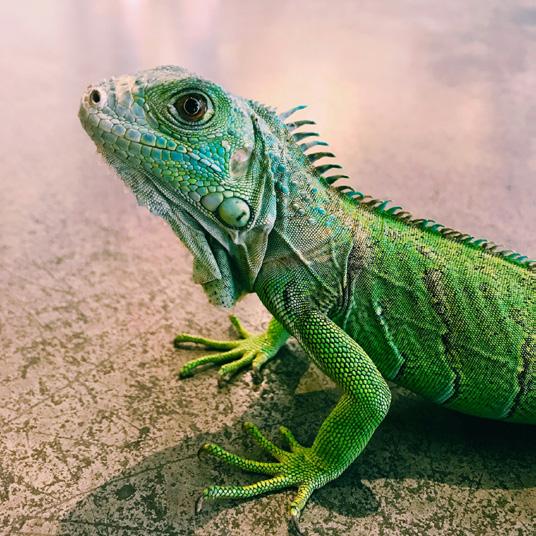
Remember that it is not just dogs and cats but any pet - including reptiles, amphibians, birds, and bunnies - that can be burned by hot ground and surfaces. If you think Lenny the Lizard is ok with hanging out on the deck, touch the surface with your hand first. If it is too hot for you then it is also too hot for Lenny.
And, if you wish to cool off a hot pet or surface with the hose, Dr. Teller reminds us that, especially in the heat of the Carolina summer, the first few minutes of water flow from the hose is often scalding hot as well.
Pets should always have unlimited access to fresh water, and access to shade and shelter. In addition to paying attention to paw health, remember that fleas, ticks, and other parasites are more active in the warm weather. With the rising temperatures comes an increase in worm populations, including many that could pose fatal health risks, like heartworm.
Heat stress is also common, and pets can quickly succumb to heat stroke and heat exhaustion.
For more tips on keeping your pets safe in the heat visit the American Veterinary Medical Association’s website, or speak with your local veterinarian.
https://www.avma.org/resources/petowners/petcare/warm-weather-petsafety



Second Chance Pet Adoptions is a non-profit animal rescue organization that has rescued stray or abandoned cats and dogs in the Triangle Area of North Carolina since 1987.
We’re the oldest no-kill rescue organization in Wake County. At Second Chance, our mission is to champion homeless cats and dogs who are healthy or treatable in the quest to find their forever homes and engage with our community to promote responsible pet ownership–ultimately reducing future generations of homeless animals.
Second Chance Pet Adoptions has spayed/neutered over 1,600 community cats in low income houses. Second Chance Pet Adoptions removed more than 90 dogs from out of control situations.
Volunteers Save Lives! We at Second Chance simply couldn’t do what we do without the dedicated support of our incredible team of volunteers. From cleaning cat rooms and washing dogs to fostering special needs animals or helping with administrative needs, our volunteers embody the heart and soul of the Second Chance mission. Foster homes are a very important part of our program. Without them, we would not be able to save as many cats and dogs.
Lack of foster homes is the primary reason we often cannot help strays in need.
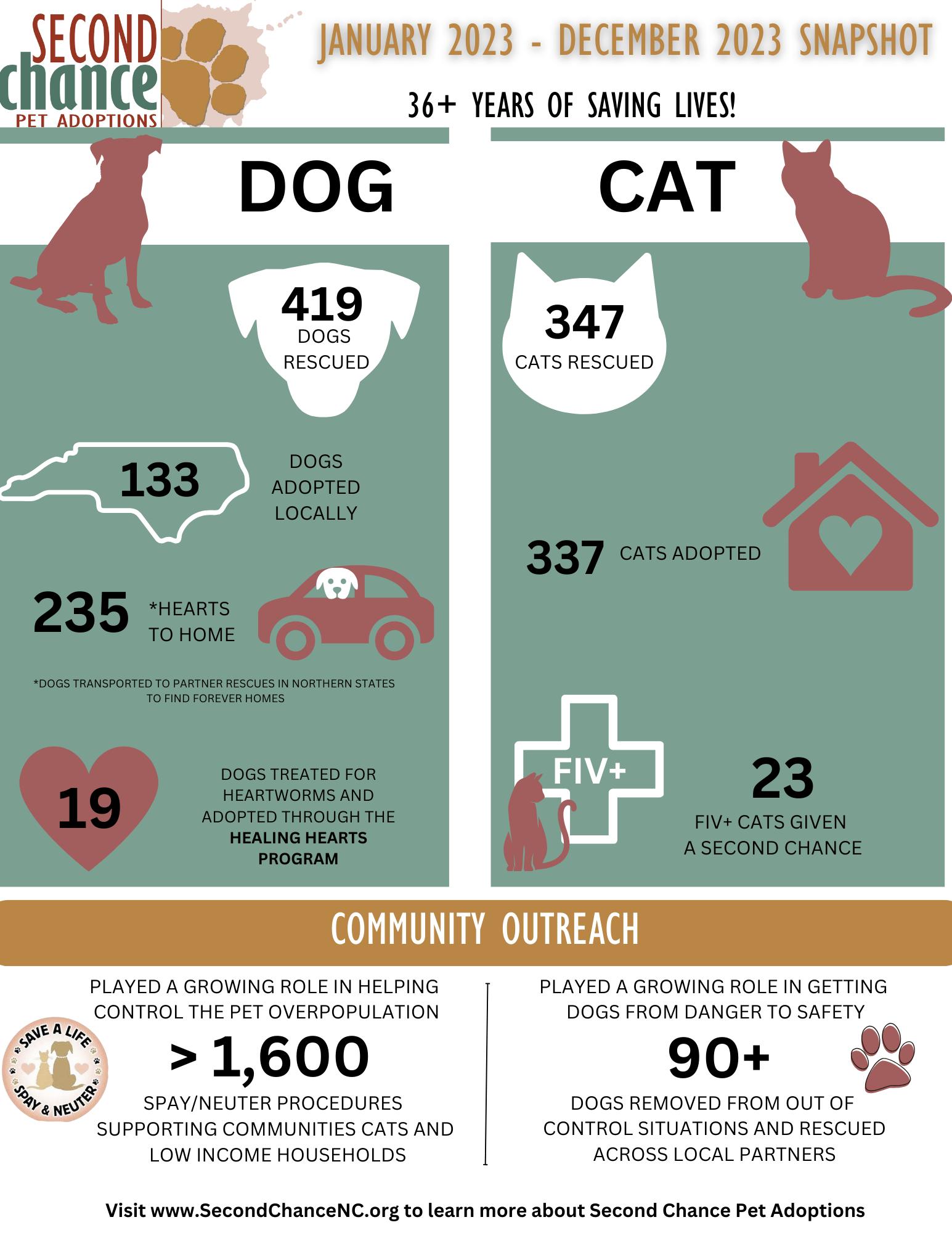

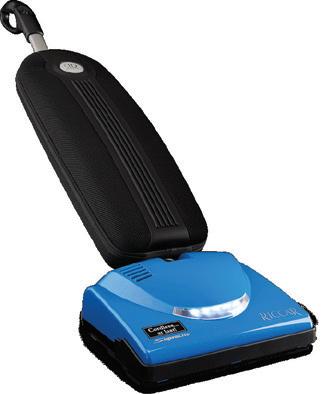


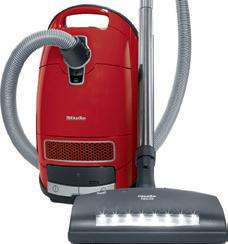






Week Day Schedule

9-12P

Jump-start your mornings with The WPTF Morning Show. Local, national and breaking news…Oneon-one’s with Triangle newsmakers, along with weather and the most detailed and helpful traffic updates that will help shape your day. Listen in every weekday from 5-9AM on the NEW News Radio 680 WPTF
Brian Kilmeade is a Fox News television personality. Weekdays 6-9AM, he co-hosts Fox News Channel’s (FNC) morning show, Fox & Friends. He has written several fiction and nonfiction books.Additionally, he serves as host of Kilmeade and Friends, (weekdays 9AM-12PM) a nationally syndicated three-hour radio show on Fox News Radio.
12-1P
5-9A 3-5P

The News @ Noon provides listeners with what they need to know on the hottest topics and breaking news of the day. Original, live and fast-paced.

Cut through the spin and delve into issues that matter to YOUR life and YOUR wallet. News. Infor mation. Weather Real -time traffic 3-6P every weekday on the NEW News Radio 680 WPTF
5-7P

The WPTF Evening News recaps the day’s top local and national stories, and includes the day’s financial reports, entertainment features, and highlights the stories that everyone is talking about. Kristine Bellino and Chris Edwards break down the day’s stories and carry news as it breaks with the WPTF News team.


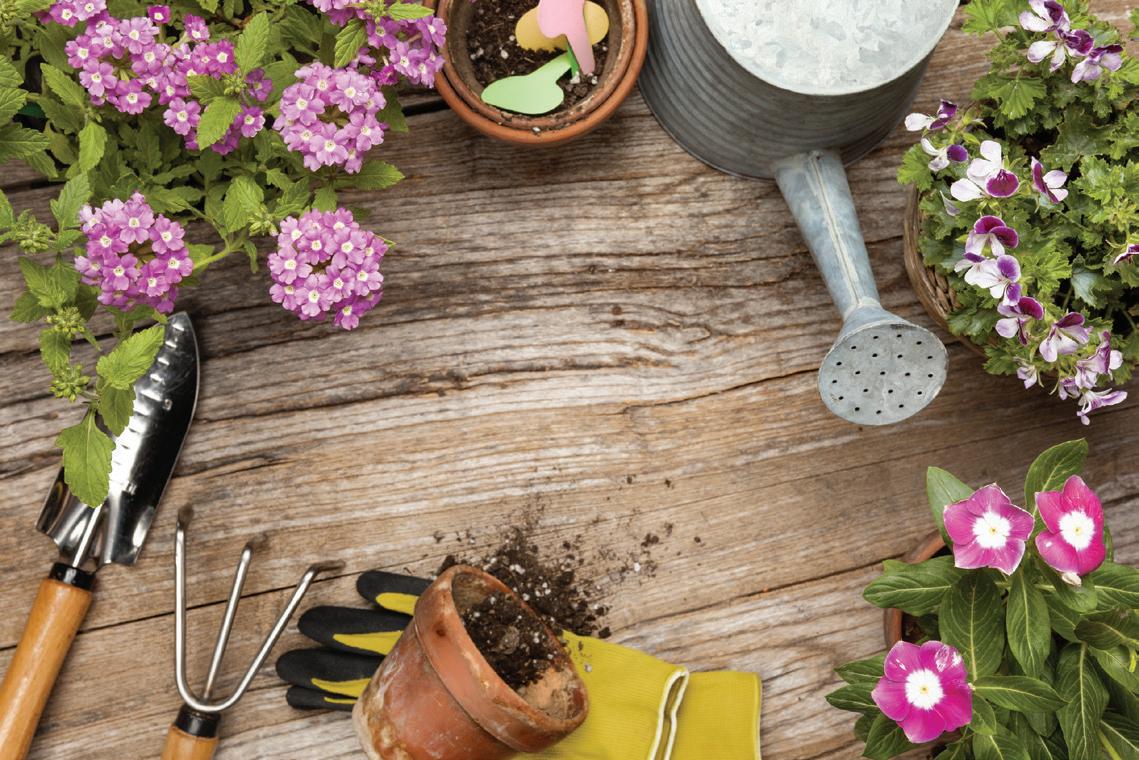




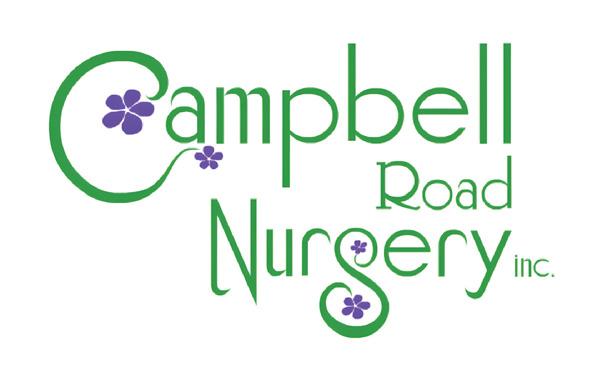
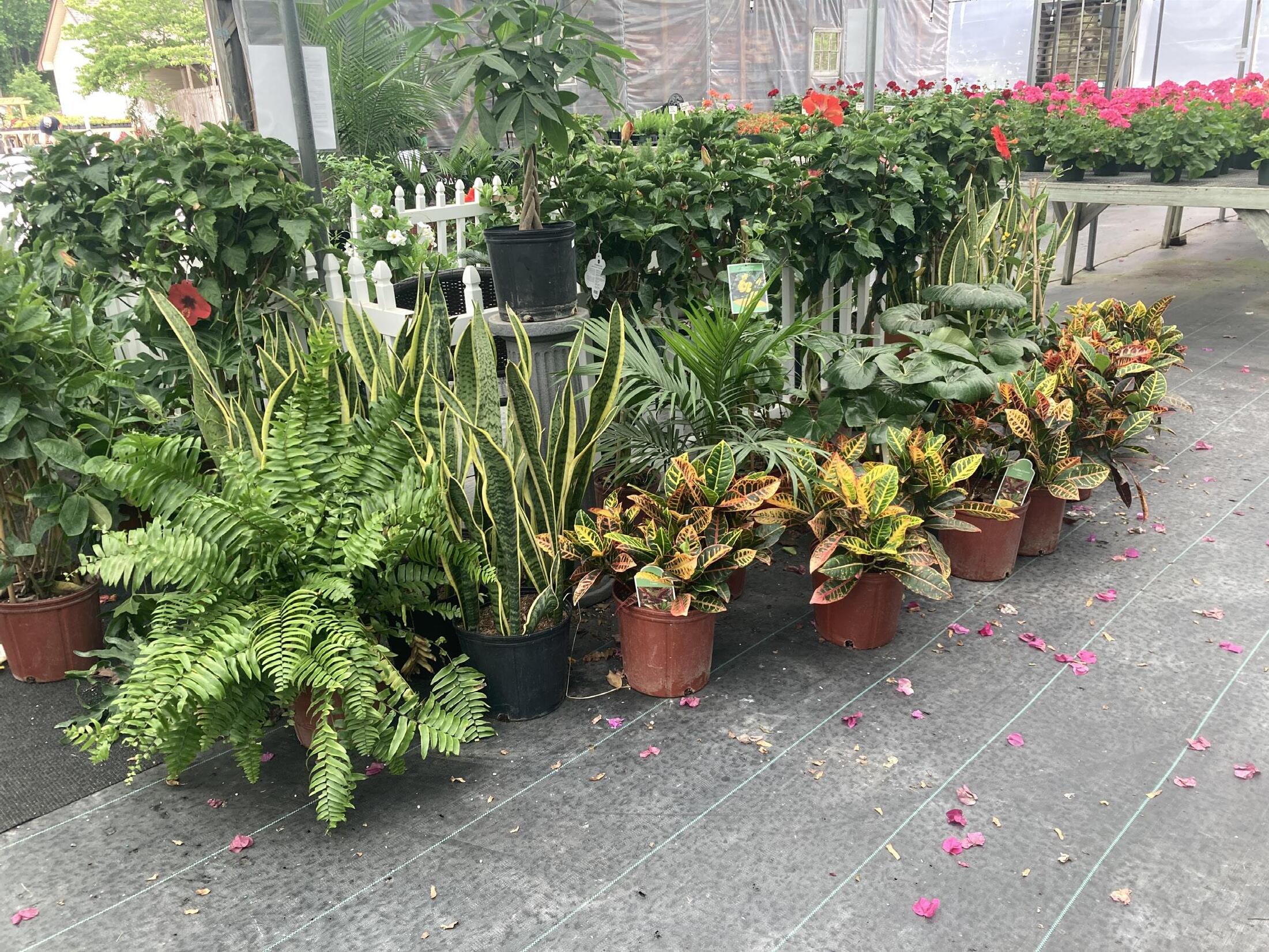




All natural NC farm-raised meats, eggs, fresh seafood, cheeses, jams, jellies, co ee, candy, sauces, fresh fruits and vegetables, gi baskets, cra s, soaps, wines, ice cream, hot dogs, hamburgers, and more!
Area Seasonal Fruits & Vegetables
• Tomatoes
• Watermelons
• Cantaloupes
• Cucumbers
• Potatoes
• Squash
• Muscadine grapes
• Sweet Potatoes


• Pecans
• Peanuts
• Greens
• Strawberries
• Blueberries
• Peaches
• Apples
• Bedding plants
• Hanging baskets
• Perennials
• Potted Plants
• Herbs

• Pumpkins & more
• Shrubs
• Succulents
• Trees
• Vegetable plants
• Cut flower s & more

